Carmarthenshire Gallantry Awards, The Great War, 1914-1918
During the course of the Great War, hundreds of men and women from the county of Carmarthenshire gained gallantry awards for various deeds of bravery and devotion to duty. Below are the people from the county who I have so far identified as having been recipients of a wide variety of these awards. Due to the large number of people from the county who gained awards, I have added the Victoria Cross winners onto a separate page.
Arthur Adams, DCM, Sergeant, 8959, 2nd Battalion, Welsh Regiment. (Laugharne). Arthur’s award of the Distinguished Conduct Medal was published in the London Gazette of 21 June 1916. The citation read: ‘For conspicuous gallantry when leading his platoon to the attack. He also rallied men of another unit who were retiring.’
Thomas Adams, DCM, Corporal, 15560, Royal Fusiliers. (Laugharne). Thomas lived at The Dolphin, Laugharne. The citation to his award of the Distinguished Conduct Medal has not yet been traced, but the award was gazetted on 19 October 1917.
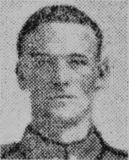
Cyril Laugharne Allen, MM, Corporal, 332986, King’s Liverpool Regiment. (Laugharne). Cyril’s award of the Military Medal was published in the London Gazette of 11 January 1917. His brother Arthur was killed in France in 1918.
Richard Griffith Anfield, MID, Sergeant, 200689, 4th Battalion, Welsh Regiment. (Llanelli). Richard was mentioned in despatches in the London Gazette of 14 April 1918.
David Brynmor Anthony, MC and Bar, Captain, 1st Battalion, Royal Welsh Fusiliers. (Kidwelly). David was born in Kidwelly on 28 October 1886, the son of John Gwendraeth Anthony and Mary (née Harris). He had gained his MA at the University of Wales, Aberystwyth, before becoming a French Teacher at Holloway High School, London. David enlisted into the Royal Welsh Fusiliers at the outbreak of war, and quickly rose through the ranks to Captain. His first award of the Military Cross was published in the London Gazette of 23 November 1917, and read: ‘For conspicuous gallantry and devotion to duty, leading his men forward under very heavy fire and inflicting heavy casualties on the enemy. Taking two men with him, he attacked a pill-box, killing two men himself and capturing a machine gun and three prisoners. He carried back a wounded Sergeant under heavy fire.’ David gained a second award of the Military Cross later in the war, after being promoted Captain. The citation, which was gazetted on 13 September 1918, read: ‘For conspicuous gallantry and devotion to duty in directing and leading a raid. When seen by the enemy he at once gave word to charge, and led the way over the wire himself, killing two of the enemy. He did three daylight patrols, in two of which he fought and beat off ten or fifteen of the enemy, and gained the necessary information. He has shown the greatest courage and skill.’ He was also awarded the Italian Medal for Military Valour.
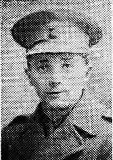
Henry Leonard Anthony, MID, Captain, Royal Army Medical Corps. (Llandefeilog). Henry was serving with the 1/1st Lancashire Mobile Section, RAMC when he was Mentioned in Despatches. He was later killed by an aerial bomb at Arras. (See the Llandefeilog and Whitland Grammar School Memorials).
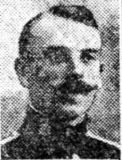
William Samuel Anthony, KCB, CMG, Major-General, Director-General, Army Veterinary Services, The War Office. (Kidwelly). William had served during the Great War with the Royal Army Veterinary Corps, and after the Armistice was promoted to the War Office. He was made a Companion of the Order of the Bath for his services, which was published in the London Gazette of 31 December 1929. He was also made a Companion of the Order of St Michael and St George for his services, which was published in the London Gazette of 1 January 1930.
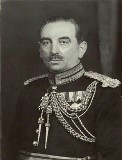
Benjamin Atkins, MM and Bar, Gunner, 42842, Royal Field Artillery. (Llanelli). Benjamin’s award of the Military Medal was published in the London Gazette of 16 August 1917. He later gained a Bar to his MM, which was published in the London Gazette of 21 October 1919.
Ivor Aubrey, MC, Lieutenant, Royal Army Medical Corps. (Burry Port). Ivor was the son of Mrs John Rees, of Uwch-y-Don House, Elkington Road, Burry Port. his award of the Military Cross was published in the London Gazette of 24 July 1917, and read: ‘For conspicuous gallantry and devotion to duty. He led a party of bearers through heavy shellfire, and collected and dressed wounded all night. This work he carried on in daylight under observation from the enemy and heavy fire, carrying back an officer on his back from the enemy wire.’
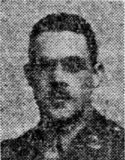
Francis Ball, MM, Driver, W/3686, Royal Field Artillery. (Llanelli). Francis was the son of Thomas Ball, of 16, Princess Street, Llanelli. His award of the Military Medal was published in the London Gazette of 16 November 1916. It was for gallantry on 18 July 1916, when he bravely repaired telephone wires under heavy German artillery fire.
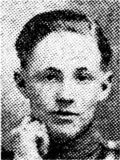
Thomas Ballantyne, MM, Corporal, Royal Field Artillery. (Llanelli). Thomas was the son of James Ballantyne, of Cynheidre Farm, Llanelli. A newspaper report stated that he had been awarded the Military Medal, but I have so far been unable to verify this.
William James Bellows, Private, 20417, 9th Battalion, Welsh Regiment. (Llanelli). William originally enlisted into the 15th Welsh, before being transferred to the 9th Welsh. His award of the Military Medal was published in the London Gazette of 4 December 1915, one of the earliest awards to the Welsh Regiment. He was discharged Class Z on 24 February 1919.
John Mayberry Bevan, MC, Lieutenant (A/Captain), Royal Field Artillery. (Llanelli). John was the son of Isaiah Bevan of Neath, and was a well respected Llanelli cricketer. His award of the Military cross was published in the London Gazette of 13 September 1918, and read: ‘For conspicuous gallantry and devotion to duty throughout sixteen days operations. On one occasion he voluntarily carried a message under heavy hostile machine-gun fire at about 300 yards range.’
Richard Bevan, Corporal, 45950, 2nd Battalion, Welsh Regiment. (Burry Port). Richard award of the Military Medal was published in the London Gazette of 12 June 1918. Richard was killed in action on the 15th September, 1918. He has no known grave, and so is remembered on the Vis-En-Artois Memorial, France.
Edwin John Beynon, MM, Bombardier, W/3249, Royal Field Artillery. (Ponthenri). Edwin served with A/110 Brigade, Royal Field Artillery, after having originally served with the 38th (Welsh) Division. His award of the Military Medal was published in the London Gazette of 21 January 1919.
William Beynon, Private, 320256, 24th Battalion, Welsh Regiment. (Whitland). William’s award of the Military Medal was published in the London Gazette of 19 March 1918.
Samuel Sydney Bird, DCM, Sergeant, 18/17168, 18th Battalion, Liverpool Regiment. (Llanelli). Samuel, known as Syd, was from Hoylake, but had played football for Llanelli for several years. His award of the Distinguished Conduct Medal was published in the London Gazette of 1 January 1917, and read: ‘For conspicuous gallantry in action. He displayed great courage and initiative in attacking a party of the enemy single handed.’ A local newspaper report enhanced the story: ‘When they were surrounded he did magnificent work, bombing back the enemy, at the same time cheering the men to greater efforts. When they broke through he killed one man with a bomb and shot another who attempted to stop the little party. Later, when Lieut. Holt was wounded, he stood by him, driving off the enemy. He displayed great leadership and forethought, and his gallant conduct throughout the day helped considerably to save the situation.’
James William Bond, DCM, MM, Sergeant, 265012, 6th Battalion, Welsh Regiment. (Pontardulais). James was a brave man. His first award was of the Military Medal, which was published in the London Gazette of 8 December 1916. His award of the Distinguished Conduct Medal was published in the London Gazette of 28 March 1918, and read: ‘For conspicuous gallantry and devotion to duty when in charge of the brigade ammunition and water dump for four days: in the open and under almost incessant shell fire, though a portion of the stores was destroyed, he nevertheless met all heavy demands on the dump, and carried out the receipt and issue of stores methodically.’

William S. Boswell, DCM, Sergeant, 112196, Royal Engineers. (Llanelli). William’s award of the Distinguished Conduct Medal was published in the London Gazette of 18 October 1918, and read: ‘For conspicuous gallantry and devotion to duty. This N.C.O., who has been eight times wounded during the present war, has repeatedly distinguished himself by his remarkable courage and coolness under heavy fire, and has at all times set a very fine example to the men of his section.’
Arthur Llewellyn Bowen, DSO, MID, Major (A/Lieutenant-Colonel), 4th Battalion, Welsh Regiment. (Llanelli). Arthur had originally been commissioned into the 4th Welsh, but by 1918 had taken command of the 10th Battalion, South Wales Borderers. His award of the Distinguished Service Order was published in the London Gazette of 3 October 1919, and read: ‘On the morning of the 4th November, 1918, in the attack against the Foret de Mormal, his battalion was held up before reaching the edge of the forest by heavy machine-gun fire. Immediately on hearing of the situation he went forward to the leading companies:, reorganised the attack, and personally led the advancing troops, who, inspired by his fine example of cool courage under heavy fire, pushed on to their final objective and completely routed the enemy.’ He was mentioned in despatches in the London Gazette of 9 July 1919.
Daniel William Bowen, MSM, Corporal, M2/018624, 23rd Division HQ, Royal Army Service Corps. (Carmarthen). Daniel’s award of the Meritorious Service Medal was published in the London Gazette of 31 December 1918.
Griffith Bowen, MM, Private, 16671, 8th Battalion, South Wales Borderers. (Llanelli). Griffith’s award of the Military Medal was for Salonika, and was gazetted on 11 March 1919.
Parcell Rees Bowen, MC, DFC and Bar, Captain, Welsh Regiment and Royal Air Force. (Abergwili). Parcell was a true hero, who met a tragic end. His first award was the Military Cross, which was published in the London Gazette of 16 August 1917, and read: ‘For conspicuous gallantry and devotion to duty. He displayed great gallantry and skill in handling his guns under very trying conditions, and behaving with great resource and initiative in outflanking a house used as divisional headquarters and compelling the inmates to surrender.’ Parcell then transferred into the Royal Air Force on 10 January 1918, becoming an Observer. He gained his decoration of the Distinguished Flying Cross during the air war in Egypt, while flying with Second Lieutenant Robert Fawcett. The citation was published in the London Gazette of 17 February 1919, and read: ‘These officers have displayed marked courage and determination on many occasions. On 22nd September they carried out an excellent reconnaissance under difficult conditions, the clouds being very low over the hills, bringing back most valuable information.’ After the Armistice on 11 November 1918, Parcell served in Salonika and Mesopotamia, before being placed on the unemployed list. Again he thirsted for adventure, and volunteered for further service with the RAF, fighting for the White Russians. On 17 July 1919 Parcell arrived at Archangel, where he met his old compatriot, Ira Taffy Jones. In ‘An Airfighter’s Scrapbook’, Ira writes glowing reports of Parcell, being glad to see another Welsh warrior in his squadron. Parcell gained a Bar to his Distinguished Flying Cross in North Russia. The citation was published in the London Gazette of 8 February 1920, and read: ‘On the 24th August, 1919, whilst observer on reconnaissance over the enemy aerodrome (Toima), he was fired upon at long-distance range from an enemy machine, both himself and the Pilot being wounded. The Pilot having collapsed from his wound on to the controls. Observor-Officer Bowen managed to guide the machine from the back seat and flew homeward for a distance of 100 miles, by which time the pilot had slightly recovered and took control of the landing, which was safely made on the Bereznik Aerodrome. This officer’s action was highly meritorious, and the guiding of the machine over a long distance was especially noteworthy in view of the wound which he had sustained in the right elbow.’ Parcell was sent home wounded, and again placed on the Unemployed List, so volunteered for a Commission into the Lithuanian Army, with whom he served until July 1920 when he accepted a Government Post. This post was Top Secret, and involved him going undercover in Dublin, at the time when the troubles were at a peak. Due to the secrecy of the work being carried out in Ireland, nothing much is known about the operations Parcell was engaged in. Parcell had been lodging with a fellow Officer at 28, Upper Fitzwilliam Street, Dublin, and the two had spent the afternoon of 27 October 1920 watching a football match at Donnybrook. After the match, Parcell could not be found, until his body was discovered at Merrion Street. His body was brought back to Carmarthen, and he was buried with full military honours in Abergwili Churchyard. Just weeks later, on ‘Bloody Sunday’, 21 November 1920, fourteen British Agents were murdered in Dublin by the IRA, led by Michael Collins. The British Army reprised the killings by storming into a Gaelic Football match at Croke Park in Dublin, and fired into the crowd to avenge their murdered colleagues, inflicting many casualties, and 14 men and children dead. Later that night, three IRA prisoners suspiciously died in captivity in Dublin Castle, and the situation swiftly escalated. The Irish Public quickly turned against the Crown, and Peace negotiations ensued, resulting in a truce being declared on 11 July 1921.
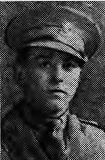
Thomas Llewellyn Bowen, MC, Lieutenant, Royal Garrison Artillery. (Pontardulais). Thomas was born in 1895, the son of Ebenezer Bowen, of Pontardulais. He served in East Africa with the South African Horse Artillery, before being commissioned into the Royal Garrison Artillery, and then served in France where he was awarded the Military Cross. The award was gazetted on 14 August 1917, and read: ‘For conspicuous gallantry and devotion. A magazine was set alight by heavy shell-fire and he went alone to the position and succeeded in extinguishing the fire with wet earth, thereby saving a large quantity of ammunition.’
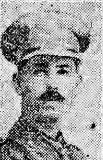
Richard Bowgett, MM, Company Sergeant Major, 200803, 4th Battalion, Welsh Regiment. (Llanelli). Richard’s award of the Military Medal was published in the London Gazette of 21 February 1919.
Sydney Ernest Bowser, MID, Sergeant, 448023, Royal Engineers. (Llanelli). Sydney served throughout the war with the 437th Field Company, Royal Engineers, which was attached to the 53rd (Welsh) Division. He was mentioned in despatches in the London Gazette of 5 June 1919.
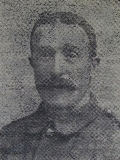
George Bradley, MID, Private, 306557, 1/8th Battalion, Royal Warwickshire Regiment. (Burry Port). George was mentioned in despatches in the London Gazette of 22 May 1917.
Leonard Brooking, MM, MID, Sergeant, 2623, Royal Field Artillery. (Ammanford) Leonard was a Londoner who had settled at Ammanford prior to 1911. During the war he served with great bravery, being mentioned in despatched twice, on 4 January 1917 and 23 December 1918. He was also awarded the Military Medal, the announcement of which was published in the London Gazette of 22 February 1918. He died at Ammanford in 1923, aged 36.
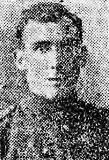
William H. Brown, DCM, Sergeant, 94515, Royal Field Artillery. (Llanelli). William’s award of the Distinguished Conduct Medal was mentioned in a wartime edition of the Llanelly Mercury, but his citation has not presently been traced in the London Gazette, although it was listed there on 31 May 1918.
James Wedge Buckley, MC, Captain, Royal Field Artillery. James was the son of William Joseph Buckley owner of Buckley’s Brewery, and of Muriel Buckley, of Penyfai, Felinfoel. He was commissioned into the Coldstream Guards on 28 April 1916, and served on the Western Front with their 1st Battalion. James was awarded the Military Cross for gallantry at Fontaine Notre Dame during the Battle of Cambrai, on 27 November 1917, and the German counter-offensive which followed. The citation was published in the London Gazette dated 16 July 1918, and read: ‘For conspicuous gallantry and devotion to duty in an attack. When his company commander became a casualty he at once took command, and on reaching the final objective organised the defence in a most efficient manner and assisted materially in breaking up the enemy’s attempts to counter-attack. He showed the greatest coolness and ability throughout the operations, and by his courage and personality set a most valuable example to his men.’ James survived the war but was wounded during the great offensive during the summer of 1918. He married Gladys Olwen Evans at Felinfoel Church in 1919. He served as a Captain with the 15th Battalion, Welch Regiment on home service during World War Two, and died at Llanelli in 1963, aged 65.
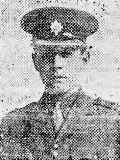
Harold Septimus Burn, MC, Captain, 436th Welsh Field Company, Royal Engineers. (Llanelli). Harold was born in Sunderland on 26 April 1879, the son of James and Annie Elizabeth Burn. He worked as a Company Secretary and was a long serving TA officer prior to moving to Llanelli by 1911. He joined the Welsh Field Company, Royal Engineers while living at Llanelli and embarked for Gallipoli with the 53rd (Welsh) Division in 1915, seeing action there and in the campaigns in Egypt and Palestine. His award of the Military cross was gazetted on 31 December 1918, in the New Years Honours List: ‘For services rendered in connection with Military Operations in Egypt’. There was no citation. Harold remained in Llanelli, later becoming a Colonel during World War Two. He died in Yarmouth on 25 October 1970 and is buried in Great Yarmouth.
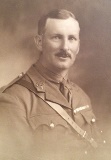
Howard Vincent Burnhill, MM, Company Quartermaster Sergeant, 21051, 15th Battalion, Welsh Regiment. (Llanelli). Howard was the son of PC Burnhill of Carmarthen, and had moved to Llanelli prior to the war. His award of the Military Medal was published in the London Gazette of 16 November 1916, and was for Mametz Wood.
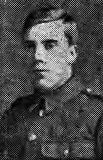
James Joseph Burns, MM, Company Sergeant Major, 3589, Welsh Regiment. (Llanelli). James’ award of the Military Medal was published in the London Gazette of 21 February 1919.
The Honorable Eric Octavius Campbell, DSO and Bar, Lieutenant-Colonel, 8th Battalion, Seaforth Highlanders. (Golden Grove). Eric’s first award was awarded in the London Gazette of 23 March 1915. He gained a Bar to his Distinguished Service Order in 1918, and was also mentioned in Despatches twice. Sadly Eric had been invalided home, and died on 4 June, 1918. He is buried at Stackpole Elidor Churchyard, in the Cawdor plot.
Hallowell Carew, MC, Captain, 4th Battalion, Tank Corps. (Ferryside). Hallowell’s award of the Military Cross was published in the London Gazette of 7 January 1918, and read: ‘For conspicuous gallantry and devotion to duty. He personally led his section of tanks on foot to their objective under very heavy shelling and intense machine-gun fire. He displayed admirable coolness and courage, going from tank to tank and helping them out of difficulties, and it was entirely due to his total disregard for personal danger that they were able to reach the infantry when the latter were held up. Before the action he carried out several good reconnaissances under heavy shell fire.’ He served after the war, becoming a member of the notorious ‘Cairo Gang’, and worked undercover against the IRA in Ireland, escaping assassination during Bloody Sunday by having just moved home.
Donald John Challenor, MM, Private, 41517, 52nd Field Ambulance, Royal Army Medical Corps. (Burry Port). Donald lived at Ashburnham Crossing. His award of the Military Medal was published in the London Gazette of 11 January 1918. A local newspaper report stated that it was for his bravery in attending to the wounded in the big advance at Langemarcke.
Albert Chester, Bombardier, W/3238, B/121st Brigade, Royal Field Artillery. (Llanelli). Albert’s award of the Military Medal was published in the London Gazette of 11 February 1919.
David Brynmor Chiles-Evans, DSO, M.R.C.S., L.R.C.P., Lieutenant-Colonel, Royal Army Medical Corps. (Burry Port). David’s award was published in the London Gazette of 3 June 1916. There was no citation, as it was in the Birthday Honours List. He was killed on 23 April 1917, and is buried at Bethune Town Cemetery, France.
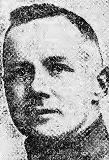
William Ewart Clapton, MM, Sergeant, 1206, Army Cyclist Corps. (Llanelli). William was attached to the Tank Corps when he was awarded the Military Medal. The award was published in the London Gazette of 10 October 1916.
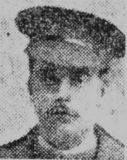
Victor James Cole, MSM, Sapper, 256221, Railways Division, Royal Engineers. (Llanelli). Victor’s award of the Meritorious Service Medal was published in the London Gazette of 14 June 1918. He had previously served with the Pembroke Yeomanry. He died of gunshot wounds on 27 September 1918, and is buried at Box Cemetery, Llanelli.
William Coleman, MM, Sergeant, 4947, 62nd Company, Machine Gun Corps. (Llanelli). William was awarded the Military Medal early in the war. He was later killed in action at the Battle of Albert, on 13 July 1916 and is commemorated on the Thiepval Memorial, France.
John Cook, MC, Captain, Royal Army Medical Corps. (Pembrey). John’s award was gazetted on 19 August 1917, while he was attached to the 4th Welsh, and read: ‘For conspicuous gallantry and devotion to duty. he went out under heavy shell fire, attending to the wounded, and carrying them to cover, and setting a fine example of fearlessness and devotion.’ His son, John Alastair Cook, gained the Military Cross during the fall of France in 1940.
Thomas Coonan, MM, Guardsman, 18123, 4th Battalion, Guards Machine Gun Regiment. (Llanelli). Thomas’ award of the Military Medal was published in the London Gazette of 10 October 1916. He was killed in action on 7 May 1918 and is buried at Gommecourt Wood New Cemetery, Fonquevillers, France.
Alexander Cornelius, MBE, Civilian. (Burry Port). Alexander was awarded the Member of the British Empire for his bravery during an explosion at Pembrey Munitions Works. The award was published in the London Gazette of 4 January 1918, and read: ‘For courage in having, on two occasions, saved a large amount of raw material in an explosives factory at the risk of his life.’
John William Crump, MM, Sergeant, 12094, 4th Battalion, Worcestershire Regiment. (Garnant). John’s award of the Military Medal was published in the London Gazette of 5 January 1917. John was killed in action at the Battle of Langemarck on 16 August, 1917, and is remembered on the Tyne Cot Memorial, Belgium.
John Daniels, MM, Lance Bombardier, W/1210, Royal Field Artillery. (Pontyberem). John lived at Cwmgroloew, Bancffosfolen. His award of the Military Medal was published in the London Gazette of 29 August 1918.
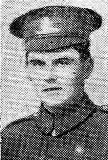
Alfred Thomas Davies, MBE, Civilian, Ministry of Munitions. (Llanelli). Alfred was the Director of the Gorse Galvanising Works and of the Glynbeudy Tinplate Works at Llanelli, and during the war became a liaison officer for the Ministry of Munitions. He was also a member of the Honourable Society of Cymrodorion and a member of the St. Pancras Borough Council. Alfred was appointed a Member of the British Empire (MBE) in the New Years Honours list of 4 January 1918 for his work.
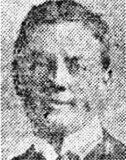
Arthur Davies, Driver, Royal Field Artillery. (Llandovery). Arthur was from Llandaff, and was a postman at Llandovery prior to the war. He was reported to have been awarded the Croix-de-Guerre for saving the life of a French officer in No Man’s Land.
Arthur Rowland Davies, DSO, MC, Major, 226th Field Company, Royal Engineers. (Carmarthen). Arthur’s award of the MC was published in the New Years Honours list in the London Gazette of 1 January 1918. His award of the DSO was published in the London Gazette of 2 December 1918, and read: ‘For conspicuous gallantry and devotion to duty during an advance. He made a reconnaissance of the forward roads under constant shell fire and made them fit for the volume of traffic which followed up the successful advance. He also entered villages as soon as captured to reconnoitre the water supply. He rendered very valuable service.’
Benjamin Davies, MM, Lance Corporal, R/9813, Kings Royal Rifle Corps. (Bancyfelin). Benjamin’s award of the Military Medal was published in the London Gazette of 11 December 1917. One of his brothers was killed at Gaza in 1917.
Benjamin Davies, MBE, Munitions Worker. (Llanelli). Benjamin was awarded the Member of the British Empire for his bravery during an explosion at Pembrey Munitions Works. The award was published in the London Gazette of 4 January 1918, and read: ‘For courage and high example in remaining at work for an hour after being very painfully burnt on his hands, face and neck, and returning to duty for another five hours immediately after treatment.’
David Davies, DCM, Sergeant, 11866, 10th Battalion, Gloucestershire Regiment. (Llanelli). David’s award of the Distinguished Conduct Medal was published in the London Gazette of 20 October 1916, and read: ‘For conspicuous gallantry. A very heavy and continuous barrage was put on our trenches, two officers and three men being buried, and the trench flattened for over 30 yards. He worked for over two hours in this barrage, assisting to dig out and rescue the buried men.’
David Guy Davies, MC, Captain, 10th Battalion, Kings Royal Rifle Corps. (Llanelli). David’s award of the MC was published in the London Gazette of 14 November 1916, and read: ‘For conspicuous gallantry in action. On three occasions he went forward into our own barrage, and brought back some of his men who had pushed too far forward. Later, he re-organised his company to complete their task.’ He was killed not long after, during the German retreat to Hindenburg Line, on 4 April 1917, and is buried at Gouzeaucourt New British Cemetery.
David J. Davies, Private, 200467, 4th Battalion, Welsh Regiment. (Henllan). David’s award of the Military Medal was published in the London Gazette of 29 March 1919. He was Discharged Class E on 8 March 1919.
Edgar Davies, MM, Lance Corporal , 49311, Royal Engineers. (Pontardulais). Edgar’s award of the Military Medal was published in the London Gazette of 1 February 1918.
Evan Davies, MC, Captain, 14th Battalion, Welsh Regiment. (Henllan). Evan was the son of David Davies, of Derwenlas, Velindre. He was commissioned into the 14th Welsh (Swansea Pals), and was awarded the Military Cross for Distinguished Service in the Field at Mametz Wood. The award was gazetted on 29 December 1916 in the New Years Honours List.
Evan P. Davies, DCM, MM, Sergeant, 355819, 25th Battalion, Royal Welsh Fusiliers. (Newcastle Emlyn). Evan had previously served with the Welsh Horse Yeomanry, before it was merged with the Montgomery Yeomanry in Egypt, forming the 25th RWF. His award of the Military Medal was published in the London Gazette of 31 December 1918, and was probably for the Third Battle of Gaza. He was later awarded the Distinguished Conduct Medal, the citation of which was published in the London Gazette of 3 September 1919, and read: ‘He has shown great gallantry and devotion to duty as Pioneer Sergeant, and his coolness under fire and in the line has been a fine example to all, with the result that his work has always been of the greatest value to the battalion. He has also done very fine work in training the battalion Pioneers. Further, his resource and energy have been invaluable in providing shelter and comfort for the men when in the line.’
Glyn Davies, DCM, Private. (Pontardulais). Glyn’s photograph was printed in a local newspaper with news of him being awarded the Distinguished Conduct Medal. The award cannot presently be traced.
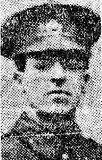
Harold Alban Davies, MC, Lieutenant, Royal Welsh Fusiliers. (Talley). Harold was the son of Reverend Alban Davies, of Talley. His award of the MC was published in the London Gazette of 24 August 1917. No citation was published, but the header in the Gazette read: ‘His Majesty the KING has been graciously pleased to approve of the undermentioned Rewards for Distinguished Service in the Field in Mesopotamia, Dated 3rd June, 1917.’
Howell John Davies, MM, Private, 14222, 9th Battalion, Royal Welsh Fusiliers. (Llanelli). Howell’s award of the Military Medal was published in the London Gazette of 13 May 1919. Howell was wounded during the last weeks of the war, and died on 4 October 1918. He is buried at Bethune Town Cemetery, France.
Ivor Davies, DCM, 345941, Private, Royal Welsh Fusiliers. (Pontardulais). Ivor was the son of John Davies, of Red Cow Inn, Pontardulais and served with the 24th Battalion, Royal Welsh Fusiliers. His award of the Distinguished Conduct Medal was published in the London Gazette of 1 March 1918, and read: ‘For conspicuous gallantry and devotion to duty in an attack. When the rest of his Lewis gun section became casualties he carried his gun to the assault, collected men as magazine carriers and opened fire on the enemy. He showed splendid courage and initiative.’
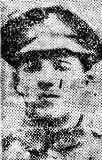
James Davies, MM, Lance Corporal, Deal/3477/S, R.M. Medical Unit, Royal Marines. (Llanelli). James’ award of the Military Medal was published in the 16 February 1917. He survived the war, but sadly died of Influenza and Pneumonia on 20 November 1918.
James Thomas Davies, MM, Guardsman, 4020, 1st Battalion, Welsh Guards. (Llanwrda). James was awarded the Military Medal during the war. He was wounded during the Battle of the Sambre, and died of wounds on 7 November 1918. James is buried at Villers-Pol Communal Cemetery Extension. His award was published in the London Gazette of 14 May 1919.
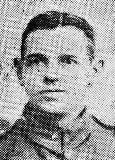
John Davies, DCM, Private, 320156, 24th Battalion, Welsh Regiment. (Carmarthen). John’s award of the Distinguished Conduct Medal was published in the London Gazette of 10 January 1920, and read: ‘For conspicuous gallantry in the advance on Orchard Post on 18th September 1918. With total disregard of personal safety he advanced and captured an enemy post, consisting of an officer and thirty men, who with three machine guns were holding up the advance. By his splendid action the line was materially aided in moving forward to its objective.’
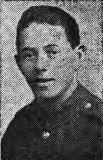
Jonny C. Davies, MM, Private, 14895, 11th Battalion, Welsh Regiment. (Nantgaredig). Jonny’s award of the Military Medal was published in the London Gazette of 18 June 1917. He was wounded during the Battle of Doiran, and died of his wounds on 25 September, 1918. Jonny lies in Sarigol Military Cemetery, Kriston.
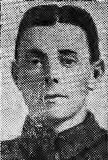
John Evan Davies, MM, Sergeant, 200770, 4th Battalion, Welsh Regiment (Abergwili). John’s award of the Military Medal was published in the London Gazette of 16 July 1918. His medals are held at the Carmarthen County Museum, Abergwili.
Johnny Davies, MM, Private, 56658, Royal Army Medical Corps. (Brynamman). Johnny’s award of the Military Medal was published in the London Gazette of 19 December 1916, along with that of his best friend Thomas Emrys Davies (see below).

Joshua James Davies, MM, Sergeant, 41531, Royal Army Medical Corps. (Burry Port and Newcastle Emlyn). Joshua’s award of the Military Medal was published in the London Gazette of 2 June 1916, and was for his bravery during the collecting and treatment of wounded during fighting at International Trench, Ypres. He was from Cilrhedyn, near Newcastle Emlyn, and worked as a Railway Engine Driver at Burry Port.
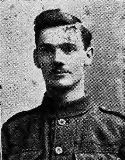
Leonard Arthur Davies, MM, Corporal, 25666, 1st Battalion, Machine Gun Corps. (Ferryside). Leonard’s award of the Military Medal was published in the London Gazette of 11 March 1919.
Levi Rees Davies, MM, Engineering Lieutenant Commander, Royal Naval Division. (Laugharne). An edition of the Welshman carried a report that Levi had gained the Military Medal. Presently neither Levi’s records, nor the award of the Military Medal to him have been traced.
Otto Hanbury Davies, MC, Captain, Royal Garrison Artillery. (Carmarthen). Otto resided at Bryntowy, Carmarthen. His award of the Military Cross was gazetted on 29 December 1916, in the New Years Honours List.
Reggie Davies, MM, Guardsman, 216, Welsh Guards. (Llanelli). Reggie’s award of the Military Medal was published in the London Gazette of 24 January 1919.
Richard Davies, MM, C de G, Private, 32562, 11th Battalion, East Lancashire Regiment (Pencader). Richard was awarded the Military Medal during the war. He was also awarded the French Croix-de-Guerre, which was Gazetted 24 October 1919.
Richard J. Davies, MM, Lance Corporal, 20501, 15th Battalion, Welsh Regiment. (Llanelli). Richard’s award of the Military Medal was published in the London Gazette of 2 November 1917, and was for Pilckem Ridge. He was Discharged Class Z on 28 February 1919.
Thomas Davies, MM, Gunner, Royal Garrison Artillery. (Carmarthen). Thomas’ details cannot yet be traced, but the Welshman Newspaper reported as his being given the Freedom of the Borough of Carmarthen, in April 1919. The article stated that on 8 May 1918 he was wounded in the right thigh by a gas shell and was taken to the 1st Australian Casualty Clearing Station. On 31 May, while recuperating from the wounds at the 1st ACCS, he volunteered to give a pint and a half of blood to save a dying comrade. He was reportedly awarded the Military Medal for this.
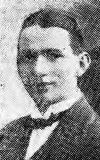
Thomas Davies, MC, MID, Regimental Sergeant Major, 5890, Royal Welsh Fusiliers. (Llanwrda). Thomas was mentioned in despatches in the London Gazette of 31 December 1915. He was later awarded the Military Cross for distinguished service in the field, in the London Gazette of 11 January 1916.
Thomas Emrys Davies, MM, Private, 56659, Royal Army Medical Corps. (Brynamman). Thomas’s award of the Military Medal was published in the London Gazette of 19 December 1916, along with that of his best friend Johnny Davies (see above).

Thomas Haydn Davies, MM, Private, 20732, 15th Battalion, Welsh Regiment. (Ammanford). Thomas’ award of the Military Medal was published in the London Gazette of 14 December 1916, so was probably for Mametz Wood. He was killed in action at Ypres on 30 January, 1917 at Ypres, and is buried at Bard Cottage Cemetery, Belgium.
Tim J. Davies, MM, Sapper, Royal Engineers. (Whitland). Tim was the Son of Mr and Mrs Rees Lewis, of Park Villa, Whitland. He was reported in The Welshman for having won the Military Medal in 1917. No further details have yet been traced.
Tom Davies, MM, Sapper, Royal Engineers. (Llanfihangel-ar-Arth). A report in the Carmarthen Journal carried the news of Tom’s award of the Military Medal while attached to the Scottish Division. Presently he has not been identified.

Violet Annie Davies, OBE, Civilian. (Pembrey). Violet was reported to have been awarded the Order of the British Empire after her bravery following an explosion at the Pembrey Munitions Works, when the brave 15 year old girl remained at her post at the works telephone exchange. The award was published in the London Gazette of 4 January 1918.
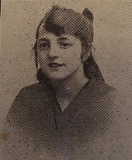
William Davies, MM, Private, 5540, 2nd Battalion, Royal Welsh Fusiliers. (Llanybydder). William’s award of the Military Medal was published in the London Gazette of 6 July 1917. William was killed in action during the Battle of the Scarpe, on 21 May 1917. William’s body was lost, and he is remembered on the Arras Memorial to the missing.
William Davies, MC, Captain, 9th Battalion, Royal Welsh Fusiliers. (Llanelli). William’s award of the Military Cross was published in the London Gazette of 25 August 1917, and read: ‘For conspicuous gallantry and devotion to duty. He reorganised his men during an attack, reconnoitred and captured the objective, and consolidated it under heavy fire. On several occasions he went through our own barrage to obtain information.’
William James Davies, MM, Private, 29785, 10th Battalion, King’s Shropshire Light Infantry. (Llanelli). William’s award of the Military Medal was published in the London Gazette of 13 May 1919.
William Job Davies, MM, Private, 77659, 1/3rd Highland Field Ambulance, Royal Army Medical Corps. (Pencader). William’s award of the Military Medal was published in the London Gazette of 10 December 1918.
Delme William Campbell Davies-Evans, DSO, Lieutenant-Colonel, 2/8th Battalion, Worcestershire Regiment. (Llanfynydd). Delme was from a renowned local family of landowners. He had originally been commissioned into the Pembroke Yeomanry. He rose to the command of the 2/8th Worcester Regiment during the war, and was honoured for his services with the Distinguished Service Order in the King’s Birthday Honours list, which was announced on the London Gazette of 30 May 1919.
Albert Dawson, MM, Sapper, 448241, Welsh Field Company, Royal Engineers. (Llanelli). Albert’s award of the Military Medal was published in the London Gazette of 19 March 1918, and was probably for the Third Battle of Gaza.
Brinley John Delaney, MM, Sergeant, 200454, Welsh Regiment. (Llanelli). Brinkley’s award of the Military Medal was published in the London Gazette of 12 December 1917. A newspaper report about his award read: ‘Sergeant Delaney showed fearlessness and set a fine example in a raid on October 5th. He was of great assistance in directing the raiding party and dealing with the wounded.’ He was later commissioned into the commissioned into South Wales Borderers on 28 May 1918.
William Herbert Dowdeswell, MC, MID, Lieutenant, Welsh Regiment. William was the son of Major Thomas Henry Dowdeswell and Sarah Ann Dowdeswell, of The Cottage, Llansteffan. He was commissioned into the 4th Battalion, Welsh Regiment, and served with the battalion in Gallipoli, Egypt, Syria and Palestine. William was then attached to the 1/153rd Punjabis, still in the 53rd (Welsh) Division) and it was with them that he was awarded the Military Cross, and also Mentioned in Despatches.
James Duffy, MBE, Civilian, Royal Ordnance Factory. (Pembrey). James was awarded the Member of the British Empire for his bravery during an explosion at Pembrey Munitions Works. The award was published in the London Gazette of 4 January 1918, and read: ‘For courage in attempting to stop a fire in an explosives factory under exceptionally dangerous circumstances.’
Thomas Lewis Ebsworth, CdeG, Lieutenant, 6th Battalion, Welsh Regiment. (Pendine). Thomas was awarded the French Croix-de-Guerre during his time at war. He formed the Laugharne Company of the Carmarthen Home Guard during World War Two.
John T. Edwards, DCM, Private, 31216, Devonshire Regiment. (Llanelli). John’s award of the Distinguished Conduct Medal was published in the London Gazette of 12 November 1918, and read: ‘For conspicuous gallantry and devotion to duty in action. When his platoon was out of touch with the left he went out three times under very heavy machine-gun and rifle fire to get touch, which he eventually did. The information obtained by him enabled his platoon to maintain their position. Later he went forward under heavy fire and brought in a wounded non-commissioned officer. Throughout the day he took command of his section and showed the finest qualities of leadership.’
Frederick Eldridge, DCM, Corporal, 112388, 64th Field Company, Royal Engineers. (Llanelli). Frederick’s award of the Distinguished Conduct Medal was published in the London Gazette of 28 November 1919, and read: ‘On the night of 16th/17th October, 1918, at the River Lys at Cuerne. He was in charge of a detachment detailed to bridge the river prior to an attack. In view of particularly heavy enemy opposition, the task was rendered extremely difficult, but owing to the fearless example he set his men, and to his perfect control of them under very trying conditions, the task was completed.’
Joseph Emanuel, MM, Lance Corporal, 1802, Welsh Guards. (Llanelli). His award of the Military Medal was published in the London Gazette of 24 January 1919.
Evan A. Enoch, DCM, MM, Sergeant, 15991, 39th Battalion, Machine Gun Corps. (Carmarthen). Evan’s award of the Military Medal was published in the London Gazette of 30 May 1919. He was later awarded the Distinguished Conduct Medal, the citation of which was published in the London Gazette of 9 March 1920, and read: ‘During the operations of September and October, 1918, east and west of Armentieres, he showed great coolness and resource under fire. In the rapid and constant advance of units he maintained the communications under his charge. It was largely due to his work that communications were maintained during a critical period, and the ordered mobility of the machine guns with the advanced infantry was possible.’
Albert Ernest Ephgrave, DSM, Leading Seaman, 188552, Royal Navy, HMS Helga. (Llanelli). Albert was the son of John and Jane Ephgrave of Llanelli. His award of the Distinguished Service Medal was published in the London Gazette of 26 June 1917, and read: ‘The KING has been graciously pleased to give orders for the following appointment to the Distinguished Service Order and for the award of the Distinguished Service Cross to the undermentioned officers in recognition of their services in vessels of the Auxiliary Patrol between the 1st February and 31st December, 1916.’
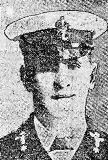
Edward Charles Ephgrave, DSM, Artificer, 288231, Royal Navy, HMS Lion. (Pwll, Llanelli). Edward was the son of John and Jane Ephgrave of Llanelli. His award of the Distinguished Service Medal was published in the London Gazette of 2 March 1915, and read: ‘For actions with the First Battle Cruiser Squadron in the North Sea on Sunday, 24th January 1915.’ HMS Lion was the flagship of Admiral Beatty, and would gain further fame during the Battle of Jutland.
Patrick Esney, MM, Company Sergeant Major, 208, 2nd Battalion, Royal Munster Fusiliers. (Llanelli). Patrick’s award of the Military Medal was published in the London Gazette of 13 May 1919.
Arthur Evans, MC, Lieutenant-Colonel, Royal Engineers. (Carmarthen). Arthur was the Mr and Mrs David Evans, of 22, Bridge Street, Carmarthen. He was in command of the military railways, telegrams and telephones in Palestine, and was awarded the Military Cross for his work there, the award of which was published in the London Gazette of 21 November 1916. He was also awarded the Order of the Serbian White Eagle, and was mentioned in despatches three times.

Brinley Samuel Evans, MC, Second Lieutenant, Machine Gun Corps. (Llanelli). Brinley’s award of the Military Cross was published in the London Gazette of 20 September 1918, and read: ‘For conspicuous gallantry and devotion to duty while in charge of four forward guns, of which three were destroyed with most of his men. He continued firing the remaining gun until bombed by the enemy, when he covered the withdrawal of his remaining gun with his revolver. The same day he took charge of three guns and engaged the enemy in mass formation along a road at 50 yards range. His courage and resource were a fine example to all ranks.’
Daniel Davies Evans, MC, Lieutenant, Royal Army Medical Corps. (Llanelli). Daniel’s award of the Military Cross was awarded while he was attached to the Royal Dublin Fusiliers. The citation was published in the London Gazette of 26 January 1917, read: ‘For conspicuous gallantry and devotion to duty. He displayed great courage and determination in collecting and attending to the wounded under very heavy fire.’
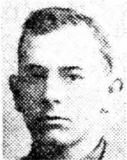
Daniel Evans, Private, Royal Welsh Fusiliers. (Talley). Daniel was the son of David and Mary Evans, of Moelfre Lodge, Talley. His award of the Military Medal was noted in The Welshman. The details have not yet been traced, but his photograph shows the Welsh Regiment cap badge.
Daniel Evans, MM, Private, South Wales Borderers. (Bronwydd). Daniel’s award of the Military Medal was announced in the Welshmen, but it cannot presently be traced.

David Evans, DCM, Gunner, 171743, Royal Garrison Artillery. (Llanelli). David’s award of the Distinguished Conduct Medal was published in the London Gazette of 18 October 1918, and read: ‘For conspicuous gallantry and devotion to duty. During an intense high-explosive and gas bombardment, this gunner refused to leave his gun, and continued to serve it as long as he was able, although wounded in the leg and arm.’
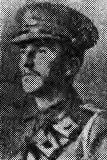
David Evans, MM, Gunner, 1256, X/47th Trench Mortar Battery, Royal Garrison Artillery. (Carmarthen). David’s award of the Military Medal was published in the London Gazette on 2 June 1916. He sadly died soon after, on 18 September 1916, and was buried at St. Sever Cemetery, Rouen. His father was presented with his medal in a ceremony at Bush Camp.
David Lloyd Evans, DCM, Sergeant, 320159, 24th Battalion, Welsh Regiment. (Ammanford). David’s award of the Distinguished Conduct Medal was published in the London Gazette of 28 March 1918, and read: ‘For conspicuous gallantry and devotion to duty. When the whole of a Lewis gun team became casualties, he fetched in the gun and spare parts under heavy fire organised a team, and got the gun into action again with great success. He showed splendid initiative and determination.’

Dewi A. Evans, MM, Corporal, 20662, 15th Battalion, Welsh Regiment. (Henllan). Dewi was awarded the Military Medal whilst attached to a Trench Mortar Battery, and was probably for Mametz Wood. The award of the Military Medal was published in the London Gazette of 16 November 1916.
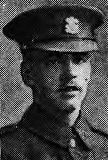
Edward Idris Evans, MM, Private, 13534, 9th Battalion, Welsh Regiment. (Kidwelly). Edward was born in Kidwelly in 1890, and was a Collier. He was awarded the Military Medal for Passchendaele, the award of which was published in the London Gazette of 17 December 1917. He died of tuberculosis at 2, Priory Street, Kidwelly on 1 November 1919, aged 29 years, and was buried with full military honours at Capel Sul Chapelyard. Edward has just been accepted for commemoration by the CWGC (Saturday 5 April 2014).
Ewart Meyler Gwyn Evans, MM, Sapper, 541554, Canadian Engineers. (Llanelli). Ewart had been born in Llanelli, and had emigrated to Canada prior to the war. His award of the Military Medal was published in the London Gazette of 1 February 1918.
Geoffrey Maynard Evans, MC, Chaplain, Royal Army Chaplains Department. (Carmarthen). Geoffrey’s award of the Military Cross was published in the London Gazette of 1 June 1917. There was no citation, as it was awarded in the Birthday Honours list. Sadly on 11 August 1917 he was killed by a shell at Westhoek Ridge, Ypres, and was buried at Bellewaarde Cemetery. His grave was later moved into Divisional Collecting Post Cemetery.
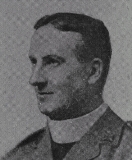
Henry Evans, MM, Corporal, 1570, 6th Battalion, Welsh Regiment. (Carmarthen). Henry’s award of the Military Medal was published in the London Gazette of 8 December 1916, and was for: ‘holding a mine head and repulsing three German attacks, when the officer in charge was wounded, he took command of the party and held the position against great odds.’
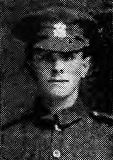
Henry Morton Glyn Evans, Captain, Welsh Regiment. (Llangennech). Henry was a businessman, from Llangennech Park. He had served as a Captain in a Volunteer Battalion of the Welsh Regiment prior to the war and was given a temporary commissioned as Captain in the Welsh Regiment on 6 December 1915, and took up duties as a recruiting officer. He then became Sub-Commissioner for Trade Exemptions, Ministry of National Service, Welsh Region, and was awarded the M.B.E. for his work, which was gazetted on 7 June 1918.
Henry Richard Evans, MC, Second Lieutenant, Royal Lancaster Regiment. (Llandyssul). Henry’s award of the Military Cross was published in the London Gazette of 24 April 1917, and was for Mesopotamia. The citation read: ‘For conspicuous gallantry and devotion to duty. He superintended the launching of pontoons under very heavy fire. It was chiefly due to his coolness and resource that a difficult task was accomplished.’
Ioan Evans, MC, Second Lieutenant, 15th Battalion, Welsh Regiment. (Llanelli). Ioan was commissioned into the 15th Welsh from the Royal Engineers, and reportedly gained his Military Cross during the capture of Mametz Wood. His citation cannot be traced, and because a Lieutenant John Evans of Llanelli also won the MC with the 15th Welsh in Mametz Wood, this has led to some confusion between the two men. They are though definitely different men, as several contemporary newspaper reports confirm.
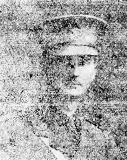
Ivor Thomas Evans, DSO, MC and Bar, Major, 5th Battalion, South Wales Borderers. (Llanwrda). Ivor was born on 3 November 1891, and enlisted in August 1914 into the Public Schools Battalion, The Middlesex Regiment. Ivor was commissioned into the South Wales Borderers in June 1916, and posted to the 5th Battalion in France. Ivor’s first MC award was published in the Kings Birthday Honours List of 3 June 1916. He was later to gain a second award of the Military Cross, the citation of which was gazetted on 16 September 1918, and read: ‘For conspicuous gallantry and devotion to duty when in command of a company. He showed marked ability in organising and collecting stragglers in the front line and placing them in the best possible positions. It was entirely due to his gallantry and skill that after inflicting heavy losses on the enemy he was able to withdraw his men with comparatively few losses.’ He also gained the Distinguished Service Order, while attached to the Welsh Regiment. His award of the DSO was gazetted on 22 March 1918, and read: ‘For conspicuous gallantry and devotion to duty. He led his company in the attack with great determination under very heavy machine gun fire. Though twice severely wounded, he consolidated and held the captured position. Afterwards he went personally to report on the situation under heavy fire, though suffering greatly from his wounds. His fearlessness and devotion to duty were beyond all praise.’
James John Pugh Evans, MC and Bar, MID, Lieutenant, 1st Battalion, Welsh Guards. (Llangain). James was born at Aberystwyth on 14 May 1885, and lived at Pant-yr-Athro, Llangain. He was a well known officer within the Welsh Guards. His first award of the Military Cross was published in the London Gazette of 2 June 1916, but being a Birthday Honours award, there was no citation. His second award of the Military Cross was published in the London Gazette of 3 June 1918, and was another Birthday Honours award. James was also mentioned in despatches during the war. He was awarded the Member of the British Empire (MBE) during WW2, for his work with the Home Guard, and died in Kensington in 1974.
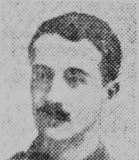
John Evans, MM, Corporal, 13845, 9th Battalion, Royal Welsh Fusiliers. (Brynamman). John’s award of the Military Medal was published in the London Gazette of 10 September 1918. He was sadly killed in action on before it was listed, on 29 April 1918, and is remembered on the Tyne Cot Memorial.
John Evans, MC, Lieutenant, 15th Battalion, Welsh Regiment. (Llanelli). John was one of the original officers of the 15th Welsh, and was awarded his Military Cross for his famed gallantry during heavy fighting at The Hammerhead at Mametz Wood. The award was published in the London Gazette of 25 August 1916, and read: ‘For conspicuous gallantry during operations. He held on to a portion of a wood with great determination for several hours till relieved by another regiment.’
May Evans, MBE, Civilian, Royal Ordnance Factory, Pembrey. (Burry Port). May was awarded the Member of the British Empire for his bravery during an explosion at Pembrey Munitions Works. The award was published in the London Gazette of 4 January 1918, and read: ‘For courage in assisting to stop a fire in an explosives factory at considerable danger to her life.’
Percy Maldwyn Evans, MM, Driver, W/1649, Royal Field Artillery. (Llanelli). Percy’s first award of the Military Medal was published in the London Gazette of 25 September 1917. He was awarded a Bar to his Military Medal within weeks, during Third Ypres, which was published in the London Gazette of 2 November 1917. Both awards came during a period of sustained gallantry, which was shown in a local newspaper report: ‘On four occasions, through very heavy fire, he carried messages from his battery to the trenches. The men who witnessed the affair say it was marvellous he came through alive, but he escaped without a scratch.’
Phyllis Marguerite Evans, RRC, Nurse, Auxiliary Hospital, Parc Howard. (Llanelli). Phyllis worked as a Surgery Nurse at Parc Howard Auxiliary Hospital. She was awarded the Royal Red Cross 2nd Class in the London Gazette of 23 October 1917, for valuable service in connection with the war.
Theophilus Lindsey Evans, CdeG, Private, 2270, 1st Battalion, Welsh Guards. (Ferryside). Theophilus was awarded the French Croix de Guerre in the London Gazette of 25 September 1917, probably for Pilckem Ridge.
William Evans, DCM, MM, Private, 13183, 2nd Battalion, Royal Welsh Fusiliers. (Llangynog). William’s award of the Distinguished Conduct Medal was published in the London Gazette of 16 January 1919, and read: ‘For conspicuous gallantry during the attack from east of the Ancre to high Wood on 23rd—28th August 1918. He gave valuable assistance to his officer by keeping touch with all companies and reporting continually on the situation. While locating a company which had pushed forward he came across a complete enemy machine-gun crew. He killed one and captured the remainder, together with the gun. Next day, though wounded, he remained with his battalion and continued at his post throughout the whole of the operation he showed splendid courage and devotion to duty.’ He had previously been awarded the Military Medal in the London Gazette of 13 March 1918.
William Hendy Evans, MM, Private, 20153, 15th Battalion, Welsh Regiment. (Llanelli). Hendy was a former Llanelli rugby star when he became one of the original volunteers into the 15th Welsh. His award of the Military Medal was published in the London Gazette of 6 July 1917, and was probably for the trench raid on the Mortjelde Estaminet.
William James Cadwallader Evans, MID, Corporal, 448309, 1/1st Welsh Field Company, Royal Engineers. (Carmarthen). William was mentioned in despatches for Palestine in the London Gazette of 22 January 1919. He had already died of pneumonia in Egypt on 15 November 1918.
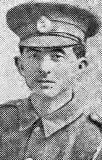
James Sheldon Eynon, MC, Captain, 11th Battalion, Welsh Regiment. (Burry Port). James had left Aberystwyth University straight after graduating in order to gain his commission into the Welsh regiment. His award of the Military Cross was published in the London Gazette of 19 December 1916, and read: ‘For conspicuous gallantry in action. He rallied his party in the face of stubborn enemy resistance and carried the enemy trenches.’
Reginald William Lyon Fellowes, MC & Bar, Major, Royal Field Artillery. (Laugharne). Reginald was the husband of Dulcie Hurt Peel, of Fern Hill, Laugharne. He served with the 52nd Battery, 15th Brigade, Royal Field Artillery and was awarded the Military Cross twice for his gallantry during the war. The first award was published in the London Gazette of 25 November 1916, which read: ‘For conspicuous gallantry in action. He with two telephonists laid a line to a spot within 200 yards of the enemy trench under intense fire. He successfully directed the fire of his battery from this very exposed position for seven hours.’ His second award, earning him a Bar to his MC, was published in the London Gazette of 13 January 1919 and read: ‘For conspicuous gallantry and devotion to duty. He carried out several daring reconnaissances and brought back valuable and accurate information. During an attack he obtained most important information of the enemy’s movements and dispositions, and while doing so he found two 77 mm. guns which he and one of his officers turned on the enemy with great effect. These guns were in an area constantly swept by heavy machine-gun fire. He did fine work. ‘
Ida Jane Fisher, MBE, Civilian, Pembrey Munition Works. (Kidwelly). Ida was awarded the Member of the British Empire for her bravery during an explosion at Pembrey Munitions Works. The award was published in the London Gazette of 4 January 1918, and read: ‘For courage in assisting to stop a fire in an explosives factory at considerable danger to her life.’
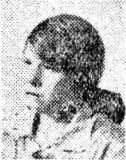
Michael Fitzpatrick, MBE, Civilian, Royal Ordnance Factory, Pembrey. (Llanelli). Michael was awarded the Member of the British Empire for his bravery during an explosion at Pembrey Munitions Works. The award was published in the London Gazette of 4 January 1918, and read: For courage in attempting to save part of an explosives factory at great risk of his life.’
John Kenrick Lloyd Fitzwilliams, BA, MC, Major, Royal Field Artillery. (Newcastle Emlyn). John’s award of the MC was published in the London Gazette of 14 November 1916, and read: ‘For conspicuous gallantry in action. During the attack and capture of an enemy position he observed the fire of his battery from the infantry front line, often under heavy shell fire. Throughout the day he sent back most accurate and .valuable information. He has proved himself a gallant and capable battery commander.’ John was killed in action on 30 August, 1918 during the Advance on the Hindenburg Line. He was 33 years old, and is buried at Vis-En-Artois British Cemetery, Haucourt. John was also the holder of the Order of St Stanislaus, 2nd Class (Russia).
William Henry Fortune, MM, Sergeant, 306902, 2nd Supply Company, Tank Corps. (Carmarthen). William’s award of the Military Medal was published in the London Gazette of 7 February 1919. A report in a local newspaper read: ‘While being heavily bombed at Le Queand at dusk on 11th August this N.C.O. refused to leave his tank which he was repairing, and take cover, although the remainder of the crew had been ordered to an adjacent dugout. The bombing at this point was so heavy that a large number of men and horses were killed, and it was entirely due to Sergeant Fortune that this tank was able to carry up supplies urgently required that night. Again at Meault on 22nd August his tank received a direct hit from a shell wounding two of the crew. Although under intense shell fire he and the remaining number of the crew affected temporary repairs and succeeded in bringing his tank to safety, a distance of nearly four miles. He undoubtedly saved the tank from being completely destroyed and set a magnificent example of devotion to duty.’
John Francis, DSO, Major, Welsh Field Company, Royal Engineers. (Carmarthen). John was the son of John Francis, of Myrtle Hill, Carmarthen, and was a principal partner with John Francis and Sons, Carmarthen. He served with the Welsh Field Company, Royal Engineers throughout their campaign on Gallipoli, and also in Egypt and Palestine, and was awarded the Distinguished Service Order in the London Gazette of 11 April 1918. He was also mentioned in despatches during his time at war, although the date cannot presently be traced.

William G. Francis, MM, Private, 59840, 9th Battalion, Welsh Regiment. (Ponthenry). William’s award of the Military Medal was published in the London Gazette of 17 June 1919.
Henry Fenton Garnons-Williams, MID, Lieutenant-Colonel, 1st Battalion, Royal Welsh Fusiliers. (Burry Port). Henry was the son of Gerald and Minnie Garnons-Williams, of Burry Port. He was mentioned in despatches in the London Gazette of 4 July 1919 while attached to the 38th (Welsh) Division HQ staff. He was killed in France during World War Two.
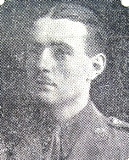
William Isaac George, MM, Bombardier, W/837, 121st Brigade, Royal Field Artillery. (Gwaun-cae-Gurwen). William’s award of the Military Medal was published in the London Gazette of 16 November 1917.

David Charles Gibbard, DCM, Private, 26814, 9th Battalion, Welsh Regiment. (Kidwelly). Charles’s award of the Distinguished Conduct Medal was published in the London Gazette of 15 November 1918, and read: ‘For conspicuous gallantry and initiative. When his platoon was heavily fired on by an enemy machine gun during an advance, he at once attacked the gun with bombs and captured it with nine of the crew. His prompt and determined action undoubtedly saved many casualties.’ He died in 1961, aged 68.
Herbert Goldsby, MM, Sergeant, 12854, 9th Battalion, Royal Welsh Fusiliers. (Tumble). Herbert’s award of the Military Medal was published in the London Gazette of 22 August 1916. Sadly Herbert was killed in action soon after his award, at the Battle of Pozieres on 27 July 1916. He is remembered on the Thiepval Memorial, France.
Ernest William Gordon, DCM, MM, Corporal, 872, Welsh Guards. (Llanelli). Ernest was from Bridgend, but worked at Llanelli prior to the war. He served with the Welsh Guards for the entire war, being awarded the Distinguished Conduct Medal, Military Medal and Bar. The citation for his DCM was published on 24 February 1920, and read: ‘For conspicuous gallantry and determination at Bavai on 6th November, 1918. He broke down the resistance of two machineguns, first by wounding two, and then by charging the post, and disposing of seven of the crew himself. Later, he shot five men, when he himself was hit, and, though unable to stand, kept up a rapid fire while his company got forward.’
Henry Percy Bright Gough, MC and Bar, Major, 17th Battalion, Welsh Regiment. (Llanelli). Harry’s first Military Cross was published in the London Gazette of 24 July 1917, and read: ‘For conspicuous gallantry and devotion to duty. He has done splendid work when in charge of parties recovering mines. He was also instrumental in rescuing eight men from a demolished cellar. This work was accomplished under heavy fire, and occupied several hours.’ He was awarded a Bar to his MC for his actions at Bourlon Wood, the citation, dated 1 February 1918, read: ‘For conspicuous gallantry and devotion to duty. He led his company in the most gallant manner, and was largely responsible for the success of the operations. He set a splendid example to his men.’ Henry was seriously wounded on 22 April 1918 at Strazeele, and died at the 62nd London Casualty Clearing Station that day. He is buried at Arneke British Cemetery, France.
Henry Luther Gravelle, MC, Lieutenant, 9th Battalion, Tank Corps. (Pembrey). Henry’s award of the Military Cross was published in the London Gazette of 3 October 1919, and read: ‘During the action near Mormal Forest On 4th November, 1918, although suffering from the effects of gas and only one of his crew left, he brought his Tank into action. Under a heavy barrage he taught a crew of infantry-men, whom he collected, to man the guns, and went forward and caught up his infantry. He beat down all opposition and by his determined courage and skill placed the infantry on their objective.’
Tom Griffin, MM, Corporal, 13277, 9th Battalion, Welsh Regiment. (Ammanford). Tom’s award of the Military Medal was published in the London Gazette of 16 August 1917. It was for gallantry at Messines Ridge on 7 July 1917.
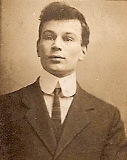
Archibald Griffiths, MM, Private, 58292, 13th Battalion, Welsh Regiment. (Pontardulais). Archibald’s award of the Military Medal was published in the London Gazette of 17 June 1919.
David Griffiths, DCM, Sergeant, 265726, 1/6th Battalion, Welsh Regiment. (Llandebie). David’s award of the Distinguished Conduct Medal was published in the London Gazette of 3 September 1918, and read: ‘For conspicuous gallantry and devotion to duty. He went forward with runners to the assistance of a wire party under heavy shell fire. While returning the officer was wounded. Sergeant Griffiths dressed his wounds under continuous shell fire, and carried him to a dressing station a mile off. His behaviour was splendid.’
David Idwal Griffiths, DCM, Private, 29403, 2nd Battalion, South Wales Borderers. (Llangain). David’s award of the Distinguished Conduct Medal was published in the London Gazette of 10 January 1920, and read: ‘For conspicuous gallantry and determined courage at Outersteene on 18th August 1918. When his platoon was held up by heavy machine gun fire, he and another man crept forward and rushed the post, capturing two machine guns, killing three enemy and taking five prisoners. After the objective was reached, these two worked forward and captured a sniper who was causing casualties during consolidation.’ Sadly David was already dead. He had been wounded at Ypres, and died of his wounds on the 3rd October 1918 aged just 20. He is buried at Ypres Reservoir Cemetery, Belgium.
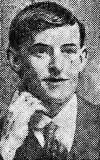
Evan Griffiths, MM, Private, 64097, Machine Gun Corps. (Cross Hands). Evan’s award of the Military Medal was published in the London Gazette of 16 October 1917.
John Griffiths, MM, Sergeant, 15260, 11th Battalion, Welsh Regiment. (Llanarthney). John’s award of the Military Medal was published in the London Gazette of 13 March 1919, and was for Salonika. He was also awarded the Greek Military Cross, the award of which was published in the London Gazette of 18 July 1919.
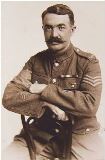
Llewellyn Owen Griffiths, MC, Second Lieutenant, Welsh Regiment. (Pontyberem). Llewellyn was the son of Rhys and Leah Griffiths, of Arfryn, Pontyberem. He enlisted into the 4th Battalion, Welsh Regiment, and served in Pembrokeshire before being commissioned into the 14th Battalion, Welsh Regiment. His award of the Military Cross was for the epic crossing of the River Ancre on 21 August 1918 which heralded the beginning of the 100 days offensive for the 38th (Welsh) Division. The citation for the award was published in the London Gazette of 29 November 1918, and read: ‘For great gallantry and determination. When stretcher cases were being brought across a river under machine-gun fire, he waded into the river, and after crossing three times succeeded in bringing all the wounded back safely. Later he did valuable work, and with twenty men established an outpost line which he maintained for several hours continuous fighting. When 200 of the enemy got round his flank, he succeeded in withdrawing in good order, being severely wounded in doing so.’ Llewellyn survived the war and was decorated at Buckingham Palace. He died in 1932, aged 41. His brother, Evan Frederick Griffiths, was killed in 1916.
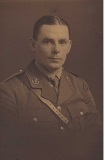
Thomas David Edgar Griffiths, MM, Bombardier, 98695, D/57th Brigade, Royal Field Artillery. (Llanelli). Thomas’s award of the Military Medal was for Salonika, and was gazetted on 11 March 1919. He was also awarded the Romanian Croix-de-Virtute Militaire, 2nd Class in the London Gazette of 19 September 1919.
William Griffiths, DCM, Private. (Pontardulais). An edition of a local newspaper carried a report of William being awarded the Distinguished Conduct Medal. The award cannot presently be traced.
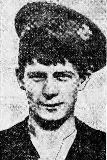
William H. Griffiths, MM, Private, 20206, 15th Battalion, Welsh Regiment. (Llanelli). William’s award of the Military Medal was published in the London Gazette of 14 May 1919.
William John Griffiths, MM, Corporal, 202931, South Lancashire Regiment. (Kidwelly). William’s award of the Military Medal was published in the London Gazette of 4 October 1918.
Agneta Annie Justina Stepney Gulston, MBE, Honorary County Secretary, British Red Cross. (Derwydd). Agneta was awarded the Member of the British Empire for her work with the Carmarthenshire Branch of the Red Cross. The award was published in the London Gazette of 28 February 1919.
William Hales, MM, Corporal, 12315, 7th Battalion, Norfolk Regiment. (Llanelli). William’s award of the Military Medal was published in the London Gazette of 22 July 1919.
William Hanson, DCM, Corporal, 3311, Royal Army Medical Corps. (Garnant). William’s award of the Distinguished Conduct Medal was published in the London Gazette of 10 March 1916, and read: ‘For conspicuous gallantry on many occasions under heavy fire, particularly on one occasion in attending to wounded.’ He was also awarded the Russian Cross of St. George.
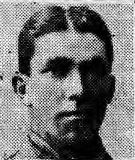
Henry Alexander Augustus Francis Harman, DSO, Captain, South Staffordshire Regiment (attached Gold Coast Regiment). (Bettws). Henry’s award of the Distinguished Service Order was published in the King’s Birthday Honours list, and was gazetted on 1 June 1916.
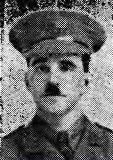
David Harries, MM, Sapper, 49843, Royal Engineers. (Whitland). David was the son of James Harries, of 26, St. Mary’s Street, Whitland, and was the first Whitland man to win the Military Medal during the war. The award was published in the London Gazette of 29 August 1918.
David Harris, DSM, Stoker, Royal Navy, Minesweeping. (Llanelli). David was reportedly awarded the Distinguished Service Medal while working on minesweepers during the war. The award has not presently been traced.
Lewin Harris, MM, Private, 381933, 25th Battalion, King’s Liverpool Regiment. (Llandeilo). Lewin’s award of the Military Medal was published in the London Gazette of 13 June 1919.
Edward Harrison, MM, Sergeant, 9125, Royal Berkshire Regiment. (Carmarthen). Edward’s award of the Military Medal was published in the London Gazette of 17 July 1917. He was shot in the back during an attack, but struggled to carry a wounded comrade back some 100 yards to safety, under heavy German fire.
William Thomas Havard, MC, Chaplain Fourth Class, Royal Army Chaplain’s Department. (Llanelli). William was from Brecon, and was a vicar at Llanelli prior to the war. He served with the Royal Army Chaplain’s Department. His award of the Military Cross was published in the New Year’s Honours List on 1 January 1918. There was no citation.
Archie H. Hodges, MM, Sergeant, Royal Field Artillery. (Llandeilo). Archie was reportedly awarded the Military Medal, but the award cannot presently be traced. Archie was a Policeman at Llandeilo prior to the war, and was probably a postman prior to that. He had also served during the Boer War.

Arthur Hollings, MID, Private, 36181, 1st Battalion, Welsh Regiment. (Ammanford). Arthur was mentioned in despatches in the London Gazette of 2 February 1920.
Edward Horgan, MM, Bombardier, 94520, B/187th Brigade, Royal Field Artillery. (Llanelli). Edward’s award of the Military Medal was published in the London Gazette of 11 March 1919.
John Gwynne Howell, MC, Lieutenant, 16 Squadron, Royal Flying Corps. (Meidrim). John had been commissioned into the Royal Field Artillery, before volunteering to serve as an observer with 16 Squadron, Royal Flying Corps. His award of the Military cross was published in the London Gazette of 1 June 1916, and read: ‘For conspicuous gallantry and skill. When the pilot of his machine was killed he climbed into the pilot’s seat, and, standing in front of him, managed to land the machine within our lines.’ John died in London on 19 December 1923, aged 31.
John Thomas Howells, DCM, Sapper, 79886, 172nd Tunnelling Company, Royal Engineers. (Pontardulais). John’s award of the Distinguished Conduct Medal was published in the London Gazette of 25 July 1916, and read: ‘For conspicuous gallantry. With a squad of five men, after twenty-two hours’ work under very dangerous conditions, he rescued two men who had been buried in a gallery through the explosion of enemy mine.’ John was killed later in the war.
Thomas James Howells, MM, Driver, 97899, B/71st Brigade, Royal Field Artillery. (Llanelli). Thomas’s award of the Military Medal was published in the London Gazette of 7 February 1919.
William Howells, Private. (Llandeilo). William was the son of William and Elizabeth Howells, of Clarence Road, Llandeilo. A note in an edition of the Carmarthen Journal announced the award of the Military Medal to William, but he has not presently been identified. The award was for Gallipoli, for bringing in the wounded and attending to them under heavy shell fire, while being wounded himself.
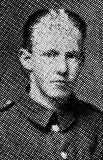
William John Howells, MM, Driver, W/5175, Royal Field Artillery. (Llanarthney). William’s award of the Military Medal was published in the London Gazette of 14 November 1916, and was for Mametz Wood.
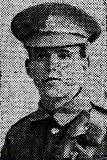
John Hughes, DCM, Corporal, 6146, Royal Army Medical Corps. (Llanelli). John’s award of the Distinguished Conduct Medal was published in the London Gazette of 16 April 1918, and read: ‘For conspicuous gallantry and devotion to duty as senior N.C.O. bearer since the commencement of the campaign. His great courage and powers of leadership and his brilliant work have been of the very greatest value throughout.’
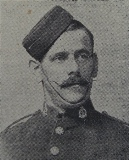
Joseph Burlington Hughes, MSM, Private, 1090, 4th Field Ambulance, Australian Army Medical Corps. (Laugharne). Joseph’s award of the Meritorious Service Medal was published in the London Gazette of 3 June 1919. He was an Australian, who married Sally Thomas, of Sunnyhill, Laugharne in 1917. The award of was: ‘For gallantry and devotion to duty for the period 17th September to November 11th 1918. During the operations carried out on 17th to 19th September 1918 near LE VERGUIER and JEANCOURT by 4th Australian Division, this N.C.O, with the temporary rank of Staff-Sergeant was in charge of a nursing tent subdivision during which time some 500 casualties were treated with great thoroughness and expedition. This was largely due to the good organisation and example of cheerfulness and industry set by this N.C.O., as at this time there was considerable shell fire in the near vicinity of the Dressing Station. This N.C.O. has at all times shown the greatest gallantry, cheerfulness and efficiency in carrying out his duties and has served continuously with 4th Australian Field Ambulance since its formation. I consider him most deserving of special recognition.’
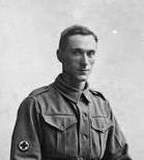
Ned Hughes, DSM, Stoker, Royal Navy. (Llanelli). Ned was reportedly awarded the Distinguished Service Medal for work on anti submarine patrols during the war, but the award has not yet been traced.
James Hurley, MM, Bombardier, 371057, Royal Garrison Artillery. (Carmarthen). James’s award of the Military Medal was published in the London Gazette of 25 September 1917.
John Garbutt Hutchinson, MC, Lieutenant, Welsh Horse Yeomanry. John was born in 1888, the son of John Hutchinson and Margaret Augusta Hutchinson (nee Powell). His father died in 1887 and his mother married Rowland Lewis Thomas, of Hillside, Whitland. John was commissioned into the Welsh Horse Yeomanry upon its formation, and served with the regiment at Gallipoli. He was awarded the Military Cross in the King’s Birthday Honours List of 3 June 1918. He died on 11 December 1933, aged 45, and is buried at Pendine Church along with his widow, Beryl, who died in 1953.
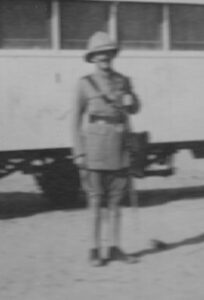
Ernest Emrys Isaac, MC and Bar, Captain, Royal Army Medical Corps. (Carmarthen). Ernest’s award of the MC was published in the London Gazette of 20 October 1916, and read: ‘For conspicuous gallantry and devotion to duty during operations. He tended the wounded in a very exposed position for 12 hours, some of them being wounded and one actually killed by shell-fire in his aid-post. At one time he had worked unceasingly for 35 hours without food, drink or rest, having divided up his food and water among those of the wounded who most needed it.’ He later gained a Bar to his MC, which was published in the London Gazette of 17 April 1917, the citation reading: ‘For conspicuous gallantry and devotion to duty. He worked continuously under very heavy fire and was responsible for the successful evacuation of the wounded. He set a splendid example of courage and determination throughout the operations.’
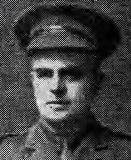
Albert Owen James, MSM, Regimental Sergeant Major, 7760, 11th Battalion, Army Cyclist Corps. (Carmarthen). Albert’s award of the Meritorious Service Medal was published in the London Gazette of 27 January 1920. He had spent several months as a Prisoner of War in 1918.
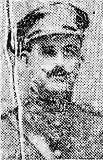
David J. James, MM, Sapper, 448045, Royal Engineers. (Llanelli). David’s award of the Military Medal was published in the London Gazette of 15 March 1918.
James James, MM, Sergeant, 17700, Royal Welsh Fusiliers. (Cross Hands). James’ award of the Military Medal was published in the London Gazette of 9 December 1916. He was also mentioned in despatches on 28 May 1918.
William James, DCM, MM, Corporal, 1728, 8th Battalion, East Surrey Regiment. (Pontyberem). William’s award of the Distinguished Conduct Medal was published in the London Gazette of 26 January 1917, and read: ‘For conspicuous gallantry in action. On several occasions he carried messages under very heavy fire, and led forward men who had lost their leaders. He set a splendid example of courage and coolness throughout.’ William was later killed in action on 4 April 1918 and is commemorated on the Poziéres Memorial. He was also the holder of the Military Medal, which he had earned during heavy fighting near Thiepval on 30 September 1916.
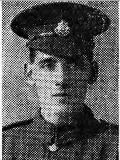
David Jenkins, MM, Lieutenant, 6th Battalion, South Wales Borderers. (Gwaun-cae-Gurwen). David’s award of the Military Cross was for Westhoek. The citation was published in the London Gazette of 8 January 1918, and read: ‘For conspicuous gallantry and devotion to duty when in charge of a convoy of wagons which were bringing up material for road repairs. He showed great gallantry and judgment under a heavy gas shell bombardment, and his determination had such a moral effect that all the stores which were not already blown up were delivered at their destination in good time.’
Frank Jenkins, MM, Lance Sergeant, 12903, 9th Battalion, Royal Welsh Fusiliers. (Dafen). Frank’s award of the Military Medal was published in the London Gazette of 10 September 1918. Frank was wounded in Flanders, probably during the action which saw him winning the Military Medal, and he died on 8 May, 1918. He is buried at Poperinghe New Military Cemetery, Belgium.
James Jenkins, MM, Sergeant Major, 871225, Canadian Railway Troops. (Meidrim). James was born at Talog on 26 July 1880, the son of Mrs. A. Jones, later of Wolfscastle Inn, Llanfyrnach. He was working in Canada as a shell maker before the war, but enlisted at Winnipeg in February 1916, joining the Canadian Railway Company, earning the Military Medal in France.

William Jenkins, DCM, Gunner, 71778, 87th Siege Battery, Royal Garrison Artillery. (Llandebie). William’s award of the Distinguished Conduct Medal was published in the London Gazette of 2 September 1919, and read: ‘For good service as battery despatch rider. He had a very great sense of duty, and it was only through his courage and disregard for danger that his despatches have been delivered. On two occasions his motor-cycle had been smashed by shell fire under him.’
William G. Jenkins, MM and Bar, Private, 13107, 1st Battalion, South Wales Borderers. (Llanelli). William’s first award of the Military Medal was published in the London Gazette of 16 November 1916, and was probably for the Somme. William’s second award of the Military Medal was published in the London Gazette of 23 February 1918, earning him a Bar to his first award.
David John Jeremy, MM, Lance Corporal, 200468, 1/4th Battalion, Welsh Regiment. (Carmarthen). David’s award of the Military Medal was published in the London Gazette of 19 March 1918. The award of the Military Medal was for Khiwelfe: ‘For having worked his Lewis Gun forward under very heavy fire and rescuing a wounded comrade.’ He was later Discharged Class E on 6 February 1919, and was given the Freedom of the Borough of Carmarthen, in April 1919.

George John, MM, Gunner, 117756, Royal Field Artillery. (Llangennech). George was the son of Benjamin and Mary John, of Glyncaerau Cottage, Llangennech. His award of the Military Medal was published in the London Gazette of 4 October 1918.
Harold Freeman John, DSM, Mercantile Marine. (Pontardulais). Harold was born on 1 March 1893, the son of William and Sarah John of Pontardulais. He served with the Mercantile Marine during the war, and was awarded the Distinguished Service Medal for his services. The award was published in the London Gazette of 19 February 1918: ‘The KING has been graciously pleased to approve of the award of Honours, Decorations and Medals to the undermentioned Officers and men of the British Mercantile Marine in recognition of zeal and devotion to duty shown in carrying on the trade of the country during the war.’
Hubert Edward John, Military Cross, Captain, 4th Battalion, Welsh Regiment. (Llanelli). Hubert’s award of the Military Cross was published in the London Gazette of 16 August 1917. No citation has yet been traced.
William Thomas John, DCM, Sergeant, 20155, 15th Battalion, Welsh Regiment. (Llanelli). William’s award of the Distinguished Conduct Medal was published in the London Gazette of 2 January 1919, and read: ‘On 20th October 1918, his platoon commander was killed whilst swimming the Selle. He at once took command, and on emerging from the river re-organised his platoon under heavy machine-gun fire, and led them forward, capturing a machine gun and crew, and turning the gun on the enemy. He then pushed forward again and captured two small enemy trench howitzers. He showed gallant leadership and did excellent work.’ William was killed during the final battles around the Forest of Mormal, on 2 November 1918, and is buried at Forest Communal Cemetery.
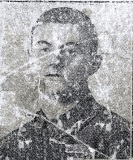
Carlton Gwynne Jones, MC, Second Lieutenant, Royal Welsh Fusiliers. (Llanelli). Carlton’s award of the Military Cross was published in the London Gazette of 13 September 1918, and read: ‘For conspicuous gallantry and devotion to duty. This officer led a platoon in an attack on enemy position, and succeeded in reaching a line close to the enemy, where he held on for five hours, enfiladed by machine-gun fire, after all the other officers of his company had become casualties. He set a very fine example to the men.’
David Jones, DCM, Corporal, 25660, 1st Battalion, Machine Gun Corps. (Pencader). David’s award of the Distinguished Conduct Medal was published in the London Gazette of 30 August 1918, and read: ‘For conspicuous gallantry and devotion to duty. He was sent forward to fill a gap, in charge of two guns, and kept his guns in action with the greatest coolness for over two hours, keeping the enemy off until the gap was closed by infantry reinforcements. He did fine service.’
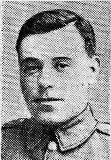
David J. Jones, MM, Corporal, 22074, Royal Air Force. (Carmarthen). David’s award of the Military Medal was published in the London Gazette of 7 February 1919.
David W. Jones, MM, Lance Corporal, 52475, Royal Engineers. (Carmarthen). Lance David’s award of the Military Medal was published in the London Gazette of 14 December 1917.
Edward Lewis Jones, MM, Guardsman, 2627, Welsh Guards. (Carmarthen). Edward’s award of the Military Medal was published in the London Gazette of 17 June 1919.
Gwilym Jones, MM, Corporal, 200239, 4th Battalion, Welsh Regiment. (Llanelli). Gwilym’s award of the Military Medal was published in the London Gazette of 11 February 1919.
Gwilym Trevor Jones, MM and Bar, Private, 13367, 9th Battalion, Royal Welsh Fusiliers. (Llanelli). Trevor’s first award of the Military Medal was published in the London Gazette of 16 February 1917. A local newspaper report stated that he was later awarded a Bar to his award, although this cannot presently be traced. He was killed at the Battle of Ypres on 31 July 1917, and is commemorated on the Ypres (Menin Gate) Memorial.
Herbert Wilson Godfrey Jones, MC, Lieutenant (T/Captain), Royal Flying Corps. (Llandeilo). Herbert had originally been commissioned into the 4th Welsh, before volunteering to serve with the Royal Flying Corps. His award of the Military Cross was published in the London Gazette of 25 May 1917. No citation has yet been traced.
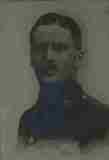
Hugh Llewellyn Jones, Lance Corporal, Royal Army Medical Corps. (Llanelli). Hugh was reported to have been awarded the White Eagle of Serbia. The award has yet to be traced.
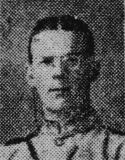
Isaac Jones, MSM, MID, Regimental Sergeant Major, 61792, 15th Battalion, Welsh Regiment (Attended South Lancashire Regiment). (Ammanford). Isaac served at Mametz Wood with the 15th Welsh, and was mentioned in despatches for his leadership in the terrible fighting within the wood. He was later recalled to Britain to help train a new Battalion of the South Lancashire Regiment, and was awarded his Meritorious Service Medal for his work with new recruits in the King’s Birthday Honours List of 3 June 1919.
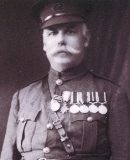
James Jones, MM, Private, 50092, Welsh Regiment. (Beulah). James’s award of the Military Medal was published in the London Gazette of 7 October 1918.
James Jones, Chief Engineer, Mercantile Marine, SS Tremorvah. (Whitland). James was from the Fisher’s Arms Hotel, Whitland. He was Chief Engineer aboard the steamship Tremorvah when she was attacked by the German submarine U-65 on 11 April 1917, and remained in the engine room as long as he could, while attempting to maintain a steady speed in the efforts to escape the attack. With the ship wrecked and powerless after having suffered several hits by shellfire, the crew were eventually forced to leave the doomed ship, and were taken prisoner. The London Gazette of 21 March 1919 contained the following King’s Commendation for his bravery: ‘The KING has further been graciously pleased to give orders for the publication of the names of the undermentioned Officers in the London Gazette as having received an expression of commendation for their services: Ch. Offr. Thomas Cundy Row (died of wounds). Ch. Engr. James Jones (1st Cl. Eng., Cert. No. 37594).’

Reverend James Cethin Jones, MC, Chaplain, Royal Army Chaplain’s Department. (Llandyssul). James’s award of the Military Cross was published in the London Gazette of 1 June 1917. No citation has yet been traced.

James Ira Thomas ‘Taffy’ Jones, DSO, DFC, MC, MM, Captain, Royal Flying Corps. (St. Clears). Ira Jones was born on 18 April 1896 at Woolstone, Llanddowror. He was a plucky character, joining the 4th Welsh in 1913. At the outbreak of war in 1914, Ira was in London studying Wireless and Cable Telegraphy. He waited for the call to arms, but it never came, and so, feeling very frustrated, he decided to join the fledgling Royal Flying Corps. It was now June 1915. After training at Farnborough, Ira was posted to No. 10 Squadron at Netheravon. He was commissioned in August 1917, and after a stint as an air gunner/ observer, was sent to England to commence Pilot Training, before being posted to the famous 74 Squadron, led by ‘Mick’ Mannock, and it was with them that he earned his impressive array of medals. Ira won the Military Medal in September 1916, by rescuing five wounded gunners, whilst he was working as groundcrew. Next Ira was awarded The Russian Order of St. George’s Cross, in January 1917, after receiving several commendations for bravery. His Distinguished Flying Cross (DFC) (London Gazette dated 3 August, 1918) was awarded for ‘In eleven days this officer attacked and destroyed six enemy aeroplanes, displaying great courage, skill and initiative.’ Next came the Military Cross. Ira’s award of the MC was published in the London Gazette of 16 September 1918, and read: ‘For conspicuous gallantry and devotion to duty. This officer, one of an offensive patrol, engaged and shot down in flames a two-seater, which fell to earth. Ten days later, on offensive patrol, he shot down a Hannover two-seater, which crashed. The next day, when patrolling, he pursued, overtook and shot down an Albatross two-seater. During the same flight he met a Halberstadt two-seater and killed the observer, who either jumped or fell overboard, but had to break off as his ammunition was finished. The next day he shot a balloon down in flames. Three days later he got a good burst with both guns on a Pfalz scout, both wings coming off. He has driven two others down out of control.’ Ira then gained a Bar to the Distinguished Flying Cross (DFC), followed by the Distinguished Service Order (DSO). Ira’s award of the DSO was published in the London Gazette of 2 November 1918, and read: ‘Since joining his present Brigade in May last this officer has destroyed twenty-eight enemy machines. He combines skilful tactics and marksmanship with high courage. While engaged on wireless interception duty he followed a patrol of nine Fokker biplanes, and succeeded in joining their formation unobserved. After a while two Fokkers left the formation to attack one of our artillery observation machines. Following them, Captain Jones engaged the higher of the two, which fell on its companion, and both machines fell interlocked in flames.’ Ira finished the war with 37 confirmed victories, being the highest scoring Welsh Pilot of the war, and became the joint 17th highest scoring Allied Fighter Pilot, scoring more kills than aces such as the great Leutnant Karl Allmenroder of Germany, and the great English Pilot, Captain Albert Ball V.C. He went on to fly again on operational flights in 1939 (without authorisation!), when the German Blitzkrieg swept through France. He was transferred to ground duties, taking command of R.A.F. Tern Hill in Shropshire. He died after a fall at Aberaeron on 30 August 1960, and is buried at Sarnau Chapel, near Bancyfelin, Carmarthen. Ira is remembered by an impressive memorial in St. Clears, next to the Town War Memorial, which he had the honour of unveiling.
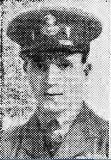
John Evan Jones, MM, Private, 28952, Welsh Regiment. (Llandebie). John’s award of the Military Medal was published in the London Gazette of 12 December 1917, which was: ‘For devotion to duty on October 5th, when in charge of a trench mortar tiring in a raid against the enemy trenches. Although his gun was put out of action temporarily several times by enemy shell fire, he stuck to his post, endeavouring to work the gun until ordered to withdraw.’
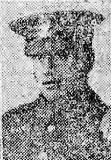
John Ivor T. Jones, MID, Company Quartermaster Sergeant, 448559, 1/1st Welsh Field Company, Royal Engineers. (Llanelli). John was mentioned in despatches in the London Gazette of 22 January 1919.
John Lewis Jones, MM, Quartermaster Sergeant, 320108, 24th Battalion, Welsh Regiment. (Llandeilo). John’s award of the Military Medal was published in the Peace Gazette of 18 January 1919. He was also the holder of the Territorial Force War Medal.
John Llewellyn Jones, DCM, Private, 54621, 17th Battalion, Royal Welsh Fusiliers. (Llanddeusant). John’s award of the Distinguished Conduct Medal was published in the London Gazette of 2 December 1919, and read: ‘On 4th November l9l8, during the attack on Mormal Forest, the platoon to which he belonged was held up by the fire of three enemy machine guns. He stood up under heavy fire, and started to bomb one of the posts. As he rose his rifle was shattered in his hand by a bul1et and his ammunition pouch was also struck and became ignited. He threw off the blazing equipment and continued to throw bombs. He was successful in silencing the gun, but was badly wounded in so doing. His most gallant action enabled the platoon to advance and deal with the two remaining guns.’
John Samuel Jones, MM, Sapper, 126410, No. 2 Light Railway Signal Company, Royal Engineers. (Carmarthen). John’s award of the Military Medal was published in the London Gazette of 11 March 1919.
Llewellyn Jones, MM, Lance Corporal, 202827, 16th Battalion, Royal Welsh Fusiliers. (Llandeilo). Llewellyn’s award of the Military Medal was published in the London Gazette of 7 February 1919. He had been killed in action at the Battle of the Selle, on 8 October, 1918, and is buried at Bois-Des-Angles British Cemetery, Crevecouer-Sur-L’Escaut.
Roger O. Jones, DCM, Sergeant, 41540, 70th Field Company, Royal Engineers. (Llanelli). Roger’s award of the Distinguished Conduct Medal was published in the London Gazette of 2 June 1916. The citation was published on 20 June 1916, and read: ‘For conspicuous gallantry when consolidating a trench immediately after capture by the enemy. When his Officer became a casualty he took command, repelled several bombing attacks, and, working for over two hours under heavy fire, successfully held and consolidated the trench. He displayed the .greatest coolness throughout.’
Richard Pritchard Jones, MM, Bombardier, Royal Field Artillery. (Rhosamman). Richard was the son of Henry and Martha Jones, of the Rose and Crown, Rhosamman. He was reported to have been awarded the Military Medal for gallantry under fire on 6 June 1918, but the award cannot presently be traced.

Thomas Albert Jones, MM, Private, 24330, 2nd Battalion, South Wales Borderers. (Dafen). Thomas’s award of the Military Medal was published in the London Gazette of 13 May 1919.
Thomas I. Jones, DCM, Corporal, 16960, 13th Battalion, Royal Welsh Fusiliers. (Henllan). Thomas’s award of the Distinguished Conduct Medal was published in the London Gazette of 3 September 1918, and read: ‘For conspicuous gallantry and devotion to duty during an attack, when his officer was wounded, this NCO took charge of the platoon, and, capturing a machine gun that was holding up the advance, led the men on and gained the objective. On another occasion, when in charge of a section, he received the surrender of a party of the enemy whom he had isolated in a shell-hole. Some of those who had given themselves up began afterwards to throw bombs, but Sergeant Jones promptly dispatched several of them and saved the section from heavy casualties, he then took charge of half the company and arranged his posts with great ability, and was largely instrumental in defeating an enemy counter-attack the next morning. Throughout the operation he showed great coolness and presence of mind.’
Thomas Lewis Jones, MM, Corporal, 235604, 14th Battalion, Royal Welsh Fusiliers. (Llanelli). Thomas’s award of the Military Medal was published in the London Gazette of 7 February 1919.
Thomas Mordecai Jones, Sergeant, Royal Army Medical Corps. (Nantgaredig). Thomas was the son of Lewis and Lettice Jones, of Plaspant, Nantgaredig. He was reported to have been awarded the Italian Silver Medal for Military Valour early in 1917, but the award cannot presently be traced.
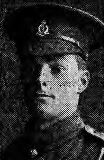
William Jones, MM, Private, 53638, 2nd Battalion, Welsh Regiment. (Golden Grove). William’s award of the Military Medal was published in the London Gazette of 14 May 1919.
William John Jones, CdeG, Sergeant, Royal Field Artillery. (Carmarthen). This man is reported as having been awarded the Belgian Croix-de-Guerre, but he cannot presently be identified.

William John Jones, CdeG, Private, 20988, 15th Battalion, Welsh Regiment. (Ammanford). William’s award of the Belgian Croix-de-Guerre was published in the London Gazette of 12 July 1918.
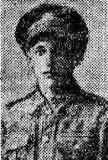
William Thomas Jones, MM, Private, 40083, Royal Welsh Fusiliers. (Carmarthen). Tom’s award of the Military Medal was published in the London Gazette of 14 December 1917.
Richard Keenan, DCM, MID, Staff Sergeant Farrier, 14043, 4th Reserve Brigade, Royal Field Artillery. (Llanelli). Richard’s award of the Distinguished Conduct Medal was published in the London Gazette of 16 February 1915, and read: ‘For conspicuous gallantry and devotion to duty in going out in broad daylight and bringing to safety four wounded men under shell and rifle fire. This Non-Commissioned Officer has previously been reported on for good service.’ He had previously been mentioned in despatches, and was also awarded the Russian Cross of St. George.
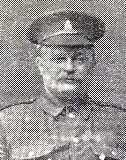
Robert Kenyon, MM, Lance Corporal, 26291, Lancashire Fusiliers. (Llanelli). Robert’s award of the Military Medal was published in the London Gazette of 11 June 1918.
David Gordon Kydd, MC, Lieutenant (A/Captain), Royal Scots. (Llanelli). David’s award of the Military Cross for Italy was published in the London Gazette of 31 May 1918, and was while he was attached to the Machine Gun Corps. There was no citation.
Ronald H Kydd, MC, Lieutenant, Royal Field Artillery. (Llanelli). The Llanelly Star wrote that this man was the son of David Kydd, of Llanelli, although it was incorrect, as he was actually a Canadian. However he has been included here out of interest. He was commissioned from the Royal Military College, Kingston, Canada, to be Second Lieutenant on 7 February 1915. His award of the Military Cross was published in the London Gazette of 13 August 1918, and read: ‘For conspicuous gallantry and devotion to duty. When in command of a section he maintained it in action during the day with the greatest gallantry, being continuously shelled and under heavy machine-gun fire. The enemy were at no period more than 1,000 yards from his position, and when they reached within 500 yards he opened fire on them with great effect with open sights.’
William Lyttleton Lawrence, DSO, Major, 1st Battalion, South Wales Borderers. (Carmarthen). William’s award was published in the London Gazette of 8 December 1914, and read: ‘For gallantry and ability in repelling the enemy on 26th September.’ William was killed during the Battle of Gheluveld, on 31 October 1914. He is commemorated on the Ypres (Menin Gate) Memorial, Belgium.
Christopher Thomas Lewis, MM, Private, 20161, 14th Battalion, Royal Welsh Fusiliers. (Pembrey). Christopher’s award of the Military Medal was published in the London Gazette of 22 July 1919.
David Edward Lewis, DCM, Corporal, 86350, 170 Tunnelling Company, Royal Engineers. (Meidrim). David’s award of the Distinguished Conduct Medal was published in the London Gazette of 14 April 1916, and read: ‘For conspicuous gallantry in accompanying an officer into the enemy’s trenches. They found an enemy mine shaft, exploded the galleries and blew in the entrance with a charge.’ David was killed in action at Loos on 26 September 1917 and is buried at Noeux-Les-Mines Communal Cemetery Extension, France.
David William Lewis, MM, Driver, 2827, ‘D’ Battery, 67 Brigade, Royal Field Artillery. (Llandebie). David’s award of the Military Medal was published in the London Gazette of 25 January 1918. He was wounded during the Battle of Passchendaele, and Died of Wounds on 28 October 1917. He is buried at Nine Elms British Cemetery.
James Lewis, MM, Guardsman, 2661, Welsh Guards. (Henllan). James was awarded the Military Medal for the Pilckem Ridge. It was published in the London Gazette of 16 November 1917.
Malcolm Meredith Lewis, MC and Bar, Lieutenant, Royal Welsh Fusiliers. (Llanelli). Malcolm’s award was published in the New Years Honours List of 1 January 1917, and was ‘For Distinguished Service in the Field.’ He gained a second award later in the war, the citation of which was gazetted on 13 September 1918, and read: ‘For conspicuous gallantry and devotion to duty. When his battalion was ordered to withdraw, he, on his own initiative, formed his company into a rearguard, and under heavy machine-gun and high explosive barrage maintained his position for a considerable time. The initiative and gallantry he displayed undoubtedly enabled many others to withdraw in time, and were a magnificent example to the men under his command.’
Rowland Simpson Lewis, DSO, Captain, Royal Army Medical Corps. (Laugharne). Rowland’s award was published in the London Gazette of 31 May 1918. There is no citation, as the award was in the King’s Birthday Honours list.
William John Lewis, MM, Sergeant, 48773, 129th Field Ambulance, Royal Army Medical Corps. (Tumble). William’s award of the Military Medal was published in the London Gazette of 7 February 1919.
Robert Chalenor Lindsey-Brabazon, MC, Lieutenant, Welsh Regiment. (Llansteffan). Robert was commissioned from the 6th Battalion, King’s Shropshire Light Infantry into the 6th Battalion, Welsh Regiment on 6 December 1914. He proceeded to France to join the battalion on 7 July 1915. His award of the Military Cross was probably for the Battle of Loos, as it was published in the King’s Birthday Honours List of June 1916. Robert married Mary Doris Dowdeswell, the daughter of Major Dowdeswell of Llansteffan, in 1915, prior to his move to France.
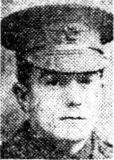
Frederick Henry Linton, DSO, MID, Captain, 4th Battalion, Welsh Regiment. (Carmarthen). Frederick’s award of the Distinguished Service Order was published on 16 August 1917, and read: ‘For conspicuous gallantry and devotion to duty. During an attack he showed great courage and initiative in being one of the first to enter the enemy’s lines, disarm prisoners and establish communication. He displayed the greatest gallantry and good leadership throughout. He was also mentioned in despatches in the London Gazette of 28 January 1916, and was awarded the Belgian Order of the Crown, 5th Class.
Stephen Lister, MM, Private, 13724, 2nd Battalion, South Wales Borderers. (Llanelli). Stephen’s award of the Military Medal was published in the London Gazette of 6 July 1917. He was later wounded at Ypres, and died on 3 February 1918. He is buried at Nine Elms British Cemetery, Poperinghe.
William Llewellyn, MM, Private, 40055, 14th Battalion, Royal Welsh Fusiliers. (Carmarthen). William’s award of the Military Medal was published in the London Gazette of 22 July 1919.
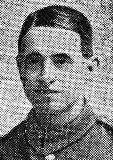
Audley Mervyn Owen John Lloyd, MC, Captain, 1st Battalion, South Wales Borderers. (Dryslwyn). Audley lived at Court Henry, Dryslwyn, and was awarded the Military Cross during the war. The details of the award have not been identified yet. He was also awarded the French Croix-de-Guerre and was mentioned in despatches.
David Lloyd, MM, Lance Corporal, 14887, 17th Battalion, Welsh Regiment. (Burry Port). David’s award of the Military Medal was published in the London Gazette of 13 March 1918 and was for Bourlon Wood. He was Discharged Class Z on 31 January 1919.
Ernest Herbert Lloyd, OBE, MID, Lieutenant Colonel, Royal Engineers. (Llandeilo). Ernest was born in Llandeilo on 28 April 1872, the son of Ernest Henry Lloyd and Mary Toup Lloyd. He was a Civil Engineer and had worked in Egypt prior to the war, where he was awarded the Order of Osmanieh. He served with the Egyptian Expeditionary Force during the war and was awarded the OBE on 7 June 1918 for his services. Ernest was also mentioned in despatches several times. He married Elizabeth, the daughter of Surgeon Reynolds, VC, of Rorke’s Drift fame and died at Totnes on 6 May 1957 after having served as an Air Raid Warden in WW2.
Frances Caroline Bowen Lloyd, RRC, Nurse, Queen Alexandrias Imperial Military Nursing Service. (Maesycrugiau). Frances was the daughter of John Lloyd, JP, of Waunifor. She worked at the 2nd London General Hospital, and on 23 October 1917 was awarded the Royal Red Cross 2nd Class: ‘His Majesty the KING has been graciously pleased to award the Royal Red Cross Decoration to the undermentioned ladies of the Nursing Services in recognition of their valuable service in connection with the War.’
Thomas Lloyd, DCM, Company Sergeant Major, 448002, 436th (Welsh) Field Company, Royal Engineers, T.F. (Llanelli). Thomas was awarded the Distinguished Conduct Medal for Egypt. His citation was published in the London Gazette of 2 September 1919, and read: ‘For gallantry in action, conspicuous good work, untiring energy, and high ability as company Sergeant-major. He has always rendered valuable services.’
Henry Gordon Maliphant, MID, Corporal, 448313, 1/1st Welsh Field Company Royal Engineers. (Llanelli). Henry was mentioned in General Allenby’s despatches in the London Gazette of 22 January 1919. He died in Llanelli in 1977.
George Marsh, MM, Private, 41142, Worcestershire Regiment. (Laugharne). George’s award of the Military Medal was published in the London Gazette of 16 October 1917.
Gilbert Marshall, MM, Bombardier, 112644, ‘D’ Battery, 77 Army Brigade, Royal Field Artillery. (Llanelli). Gilbert’s award of the Military Medal was published in the London Gazette of 21 January 1919. He had sadly been killed prior to this, during the advance on the Hindenburg Line, on 2 September 1918, and is buried in Vis-En-Artois British Cemetery, Haucourt.
William Martin, MM, Private, 20462, 15th Battalion, Welsh Regiment. (Carmarthen). William’s award of the Military Medal was published in the London Gazette of 11 February 1919. Sadly he had been killed during the fighting at Morval on 30 August 1918 and is buried at Morval British Cemetery.
George Martin-de-Bartolome, CdeG, Battery Sergeant Major, 275683, Royal Garrison Artillery. (Ammanford). George was an old soldier that had become a postman at Ammanford before the war, marrying Esther Nicholas there. He was awarded the French Croix-de-Guerre in the London Gazette of 16 August 1918. He later emigrated to Canada and died there in 1965.
Henry James Matthews, MM, Guardsman, 263, Welsh Guards. (Burry Port). His award of the Military Medal was published in the London Gazette of 17 June 1919.
Reverend E. Matthias, Chaplain 3rd Class, Royal Army Chaplain’s Department. (Llanelli). Reverend Mathias was mentioned in despatches in the London Gazette of 24 December 1917.
Edmund Miles, DCM, 151654, Sergeant, Royal Engineers. (Pantyffynon). Edmund was the son of John and Mary Jane Miles, of Oakfield Street, Pontardulais. His award of the Distinguished Conduct Medal was published in the London Gazette of 17 April 1918, and read: ‘For conspicuous gallantry and devotion to duty. He did excellent work during the operations, and has set a very fine example to his men under fire at a time when they were suffering heavy casualties. His courage and determination in keeping up the necessary supply of stores and material enabled every task allotted to him to be completed in time.’
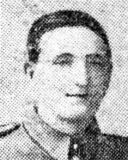
Gabrial Miron, MM, Lance Corporal, R/13130, 4th Battalion, King’s Royal Rifle Corps. (Llanelli). Gabriel was the son of Reverend Israel Miron, and had been educated at the Old Castle School, Llanelli. His award of the Military Medal was published in the London Gazette of 13 May 1919.
Daniel Thomas Morgan, MM, Private, 77790, 142nd Field Ambulance, Royal Army Medical Corps. (Carmarthen). Daniel’s award of the Military Medal was published in the London Gazette of 21 January 1919.
David George Morgan, MBE, Civilian, Royal Ordnance Factory, Pembrey. (Burry Port). David was awarded the Member of the British Empire for his bravery during an explosion at Pembrey Munitions Works. The award was published in the London Gazette of 4 January 1918, and read: ‘For courage and high example in picking up and drowning a shell which had become accidentally ignited.’
David Lloyd Popkin Morgan, MC, Captain, 24th Battalion, Welsh Regiment. (Llandovery College). David’s award of the MC was published in the London Gazette of 2 July 1918, and read: ‘For conspicuous gallantry and devotion to duty. When a gap occurred in the line after the capture of an enemy position he made repeated journeys over a fire-swept zone carrying information and keeping in close touch with the situation. By his initiative and coolness he was largely responsible for driving back an enemy counter-attack.’ In February 1918, David’s Company was given the honour of guarding the Holy Sepulchre at Jerusalem. Sadly, David was killed soon after, when his Battalion was ordered into a night attack on a hill at Selwad on 9 March, 1918. He is buried at Jerusalem War Cemetery.
John Howell Morgan, MM, Lance Corporal, 56549, 159 Company, Machine Gun Corps. (St. Clears). John’s award of the Military Medal was published in the London Gazette of 15 March 1918, when his address was given as Pontypridd. He survived the war, and died in 1963 at St. Helier, Jersey.
Morgan Cyril Morgan, MC, Captain, South Wales Borderers. (Llandovery). Morgan was the son of David and Mary Elizabeth Morgan, of Henllys, Llandovery. He was commissioned into the 2nd Battalion, South Wales Borderers, and saw extensive service with the battalion during the war, being present at the siege of Tsingtau, and fighting in Gallipoli and France. He gained several awards during the war: Mentioned in Despatches three times; French Croix-de-Guerre; Order of the Crown of Italy; a Brevet Promotion to Major, and the Military Cross. His award of the Military Cross was gazetted on 8 November 1915 and was for Gallipoli.
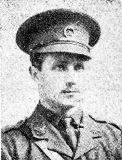
Richard Morgan, MM, Driver, 24382, Royal Field Artillery. (Llandyssul). Richard’s award of the Military Medal was published in the London Gazette of 29 March 1918.
Richard Eric Morgan, MM, Corporal, W/1859, Royal Field Artillery. (Llanelli). Richard’s award of the Military Medal was published in the London Gazette of 27 July 1917.

Thomas Morgan, MM, Sergeant, 14735, 1st Battalion, South Wales Borderers. (Llandingat). Thomas’s award of the Military Medal was published in the London Gazette of 8 December 1916. He was killed at Ypres on 10 November 1917, and is commemorated on the Tyne Cot Memorial.
John Watcyn Morgan, MC, Lieutenant, 1/1st Welsh Field Company, Royal Engineers. (Llanelli). John was the son of Canon D. Watcyn Morgan, Vicar of Llanelli. His award of the Military Cross was published in the King’s Birthday Honours list in the London Gazette of 31 May 1918, and was for Egypt.
Charles Bernard Morland, MID, Lieutenant Colonel, 2nd Battalion, Welsh Regiment. (Llangyndeyrn). Charles was born at Montreal on 12 November 1866, the son of Thomas Morland. He had moved to England before 1871, and brought up by his grandparents. Charles married Elma Alice Maud Abadam, of Court Henry, in 1894, a descendant of the Duke of Burgundy, and the couple had residences at Cilcennin and Llangyndeyrn. He was a long serving soldier, and had originally been commissioned into the Welsh Regiment in 1887. He had served with them throughout the Boer War, and at the outbreak of the Great War was given command of the 2nd Battalion, Welsh Regiment, part of 3 Brigade, 1st Division. He was mentioned in despatches three times during this early stage of the war, but was killed in action on 31 October 1914, at Gheluvelt. He is buried in Ypres Town Cemetery.
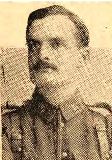
Arthur Reginald Morris, MM, Able Seaman, WZ/155, Royal Naval Volunteer Reserve. (Laugharne). Reggie was the son of Jonah and Miriam Morris, of Clyde Cottage, Laugharne. His award of the Military Medal was published in the London Gazette of 28 January 1918, and it was awarded for bravery while carrying despatches under fire.
Etheldreda Morris, MBE, Welfare Superintendent, Pembrey Munition Works. (Carmarthen). Etheldreda was the daughter of the poet Sir Lewis Morris and Lady Flora Morris, of Penbryn, Llangunnor. Her award of the Member of the British Empire was published in the King’s Birthday Honours list in the London Gazette of 4 June 1918, and was for services in connection with the war. Her brother, Arthur Morris, was a Naval Architect at Armstrong, Whitworth and Company at Newcastle, and was also awarded the MBE.
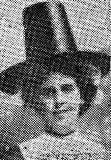
John George Morris, MM, Sergeant, 77982, Royal Flying Corps. (Llanelli). John’s award of the Military Medal was published in the London Gazette of 14 September 1917. He had previously served with the 15th Welsh.
William Morris, MM, Private, 8207, 1st Battalion, South Wales Borderers. (Llanelli). William was awarded the Military Medal during the war, but the date of the gazette cannot presently be traced.
William Archibald Morris, DCM, Sergeant, 14582, 2nd Battalion, Welsh Regiment. (Carmarthen). William’s award of the Distinguished Conduct Medal was published in the London Gazette of 22 September 1916, and read: ‘For conspicuous gallantry and devotion to duty in action. By his fine leadership a sap was held against hostile attacks. Though wounded he remained throwing bombs for two hours. He has displayed great bravery on other occasions.’ William was wounded during the German Offensive on the Lys, and was brought back to the UK for treatment at the 1st Southern General Military Hospital, Birmingham. He sadly died of wounds there on 2 May 1918, and is buried at Carmarthen (St. David) Churchyard.
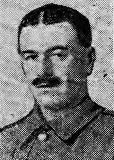
Richard Austin Nevill, DSO, Lieutenant-Colonel, Welsh Field Company, Royal Engineers. (Llanelli). Richard was born at Llangennech in 1867, the son of William and Rachel Nevill. His award of the Distinguished Service Order was published in the London Gazette of 28 December 1917. There is no citation, as the award was published in the New Years Honours list. He was also mentioned in Sir Archibald Murray’s despatches, and died on 11 January 1946.
Grismond Lewis Nicholas, MM, Sergeant, 448051, 1/1st Welsh Field Company, Royal Engineers. (Llanelli). Grismond was the son of Thomas and Martha Nicholas, of Llanelli. His award of the Military Medal was published in the London Gazette of 19 March 1918. Grismond died at Hendon in 1957.
Gwilym David Nicholas, MM, Private, 34100, 9th Battalion, Welsh Regiment. (Bynea). Gwilym was the son of James and Mary Nicholas, of Bynea. His award of the Military Medal was published in the London Gazette of 23 July 1919. He died in 1960.
Sarah Jane Nicholas, RRC, Acting Sister, Queen Alexandria’s Imperial Military Nursing Service. (Llanelli). Sarah was the wife of James Thomas Nicholas, of College Hill, Llanelli. She worked as a nurse at the Alexandra Military Hospital at Cosham. She was awarded the Royal Red Cross 2nd Class in the London Gazette of 23 February 1917.
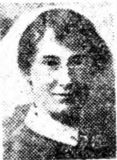
Thomas Charles Nicholas, MC, Lieutenant, South Lancashire Regiment. (Llandeilo). Thomas was commissioned into the South Lancashire Regiment on 9 September 1915. He was attached to the Machine Gun Corps when he was taken prisoner by the Germans in 1918. The award of his Military Cross was announced in the Carmarthen Journal shortly after his capture, but has not yet been traced in the London Gazette.
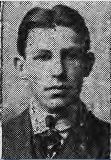
James Northey, DCM, Sergeant, 9563, 2nd Battalion, Welsh Regiment. (Burry Port). James’s award of the Distinguished Conduct Medal was published in the London Gazette of 11 March 1916, and read: ‘For conspicuous gallantry when he went out four times over the front parapet under heavy rifle fire at about 150 yards range and successfully brought in four wounded men. James was wounded on the Somme, and brought back to the Army Hospital at Merthyr, where he died of wounds on 8 October, 1916. He is buried at Merthyr Tydfil (Beech Grove) Cemetery.
Harold Talbot Norton, MM, Corporal, 113365, Royal Engineers. (Carmarthen). Harold was the son of George Talbot Norton, of Carmarthen. He had originally enlisted into the Welsh regiment, before transferring to the Royal Engineers. His award of the Military Medal was published in the London Gazette of 22 February 1918. Harold died in Cardiff on 3 November 1970.
William Oldham, DCM, Sergeant, 448089, Welsh Field Company, Royal Engineers. (Llanelli). Willaim’s award of the Distinguished Conduct Medal was published in the London Gazette of 15 February 1918, and read: ‘For conspicuous gallantry and devotion to duty. He did excellent work in positions exposed to the enemy’s fire, and set a splendid example to his men.’
James Alexander Orman, DCM, Sergeant, 200780, 1/4th Battalion, Welsh Regiment. (Carmarthen). James’s award of the Distinguished Conduct Medal was published in the London Gazette of 24 April 1918, and read: ‘For conspicuous gallantry on 9th August 1915, near Anzac, when, although wounded early in the day, he remained with his Company until dark, displaying great courage and resource.’ James was killed in action during Operations in the Jordan Valley, on 9 March, 1918. He is buried in Jerusalem War Cemetery, Israel.
Andrew Geraint Joseph Owen, MC, Second Lieutenant, Welsh Regiment. (Abergwili). Andrew was the son of the Bishop of St. David’s, John Owen, and his wife Amelia Mary Elizabeth Owen, of Abergwili Palace. He was commissioned into the 15th Battalion, Welsh Regiment (Carmarthen Pals). His award of the Military Cross was published in the London Gazette of 28 December 1917 and was for Distinguished Service in the Field.
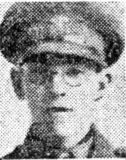
Augustus Charles Owen, MC, Lieutenant, 8th Battalion, Somerset Light Infantry. (Llandovery College). Augustus’ award of the MC was published in the London Gazette of 16th September 1918, and read: ‘At a critical moment, he held his position with a small party of men against an enemy attack delivered after a heavy bombardment. By his fine example of courage and determination, he enabled the line in that part of the field to be restored’. Augustus was killed in action on the Somme just a few months after, on 6 August 1918. He is buried at St. Amand British Cemetery, east of Doullens, France.
Richard J. Owen, MM, Quartermaster Sergeant, 2904, Royal Engineers. (Carmarthen). Richard’s award of the Military Medal was published in the London Gazette of 12 December, 1919.
Richard Bevan Owens, MID, Driver, 448154, Royal Engineers. (Carmarthen). Richard served in the Egypt and Palestine campaigns with the 53rd (Welsh) Division HQ, Royal Engineers. He was mentioned in despatches in the London Gazette of 5 June 1919. According to his grand-daughter, the award was for an incident when a work party had strayed into Turkish territory, and had to fight off a Turkish patrol with shovels and picks. His elder brother, William Henry Owens, was killed at Ypres early in the war.
Harry Parker, MM, Private, 11726, 6th Battalion, King’s Shropshire Light Infantry. (Glanamman). Harry’s award of the Military Medal was published in the London Gazette of 2 August 1918.
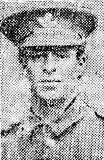
Isaac Idris Parry, 292473, Gordon Highlanders. (Llangennech). Idris is reported in an edition of the Llanelly Star to have been serving with the Welsh Regiment, and gaineing the distinction of being awarded the Distinguished Conduct Medal and the Military Medal. No such awards can be traced, although an Isaac Parry of the Gordon Highlanders was awarded the Military Medal twice, the first in the London Gazette of 17 July 1917, and the second on 25 June 1918. This is most likely the correct man.
Walter Paxton, MID, Bombardier, Royal Artillery. (Llanelli). Walter was reported to have been mentioned in despatches. His award cannot presently be traced.
Robert Lloyd Peel, MC, Lieutenant, Royal Field Artillery. (Taliaris). Robert’s award of the Military Cross was published in the London Gazette of 19 December 1916, and read: ‘For conspicuous gallantry in action. He and a Sergeant rescued several wounded men from a burning gun-pit, and thereby saved many lives. Later, he continued to extinguish the fire, and prevented an explosion of ammunition.’ Robert died of wounds sustained at Ypres on 3 September, 1917. He lies in Bard Cottage Cemetery, near Ypres.
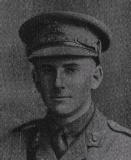
George J. Perrin, MM, Sapper, 71025, No. 3 L.R.S. Company, Royal Engineers. (Llanelli). George’s award of the Military Medal was published in the London Gazette of 17 January 1919. He died at Llanelli in 1930.
Cecil Augustus Phillips, MC and Bar, Lieutenant, 1/4th Battalion, the Welsh Regiment. (Llanelli). Cecil’s award of the MC was published in the London Gazette of 13 September 1915, and read: ‘For great gallantry in going out almost 70 yards under heavy shrapnel and rifle fire, and assisted by an N.C.O. bringing in a wounded officer to the covering of a trench, and again returning and bringing in three other wounded soldiers.’ The wounded officer was Captain Shenston of the Essex Regiment. This brave and selfless act also resulted in Cecil’s deed being written into the book ‘Deeds That Thrilled The Empire’. Cecil later gained a Bar to his Military Cross, the citation of which was published in the London Gazette of 3 October 1919, and read: ‘He showed great dash and courage on the night of 18th-19th September, 1918. He took his company up Hindhead, near El Mugheir, with a rush, took two machine guns, and effectually anticipated the enemy’s occupying this most formidable position. On the night of 19th/20th September, 1918, he pushed on into Jurish in the fog, right through the enemy line, and in the morning the enemy found his company in their rear and surrendered.’
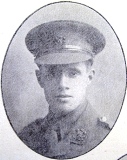
Rees Frederick Phillips, MC, Captain, Duke of Cornwall’s Light Infantry. (Glanamman). Rees’ award was published in the London Gazette of 20 October 1916, and was for the Somme. It read: ‘For conspicuous gallantry during operations. He organised and directed carrying parties under heavy shell fire, and helped to bring back a badly wounded man.’ He survived the war, becoming a Major, but his son David was killed in Italy during the Second World War.
Sidney Phillips, MM, Sergeant, 13432, Royal Welsh Fusiliers. (Llanelli). Sidney’s award of the Military Medal was published in the London Gazette of 2 November 1917, and was probably for the Battle of Messines Ridge.
Stephen Thomas Phillips, MC, Second Lieutenant, Royal Welsh Fusiliers. (Pwll, Llanelli). Stephen worked as a teacher at Pwll School prior to being commissioned into the 17th Battalion, Royal Welsh Fusiliers. He was awarded the Military Cross for Pilckem Ridge. The award was gazetted on 8 January 1918, and read: ‘For conspicuous gallantry and devotion to duty. Throughout the. advance he displayed great coolness and gallantry, dealing with many critical situations as they arose, and afterwards successfully organising the defence of his section.’
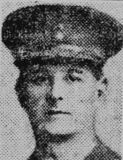
William Phillips, MM, Lance Corporal, 1422, 6th Battalion, Welsh Regiment. (St. Clears). William was the son of Thomas and Margaret Phillips, of Panteg, Llanwinio. He had worked as a miner at Tumble, prior to enlisting into the 6th Welsh. His award of the Military Medal was published in the London Gazette of 8 December 1916, for rescuing wounded soldiers under heavy German fire.
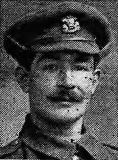
Harry Lawson Pickard, MC, Lieutenant, 9th Battalion, Royal Welsh Fusiliers. (Llanelli). Harry’s first award of the Military cross was published in the London Gazette of 14 February 1919, and read: ‘For conspicuous gallantry, leadership and devotion to duty during an operation near the Bois de Biez on September 30th, 1918. During the attack he led his platoon with great dash, and though early wounded he continued at duty and remained in charge of the outpost line until his company was relieved 18 hours later. His fine conduct had an inspiring effect on his men.’ Harry was killed on 20 October 1918 during the Battle of the Selle, and is buried at St. Aubert British Cemetery, France.
William Alfred Pickard, MC, Captain, 11th Battalion, Royal Welsh Fusiliers. (Llanelli). William’s award of the Military cross was published in the London Gazette of 1 January 1919. ‘His Majesty the KING has been graciously pleased to approve of the undermentioned rewards for distinguished service in connection with Military Operations in Salonika. Dated 1st January, 1919.’ He was also awarded the French Medaille d’Honneur avec Glaives en Vermeil in the London Gazette of 18 July 1919.
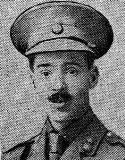
John Geoffrey Nelson Powell, MID, Lieutenant, 1/1st Welsh Field Company, Royal Engineers. (Llanelli). John was mentioned in despatches for Egypt in the London Gazette of 22 January 1919. He died at Llanelli on 17 April 1931.
John Edward Powell, DSO, Lieutenant-Colonel, Royal Army Medical Corps. (Carreg Cennan). John was the youngest son of Thomas and Mrs Powell, of Carreg Cennan, Llandeilo. He served with the Royal Army Medical Corps, and was awarded the Distinguished Service Order in the London Gazette of 22 June 1917. There is no citation.
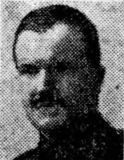
Archibald John Preece, DSM, Signaller, Z/1587, Royal Naval Volunteer Reserve, Minesweeping. (Llandovery). Archibald’s award of the Distinguished Service Medal was published in the London Gazette of 29 June 1917, and read: ‘The KING has been graciously pleased to give orders for the following appointments to the Distinguished Service Order and for the award of the Distinguished Service Cross to the undermentioned officers in recognition of their services in Mine-sweeping operations between the 1st July, 1916, and the 31st March, 1917.’ He was just 19 years old when the King presented him with his award at Buckingham Palace.
John Edward Price, MM, Private, 73308, 28th Battalion, Canadian Infantry. (Laugharne). John’s award of the Military Medal was published in the London Gazette of 21 September 1916. He was later commissioned into the Royal Air Force, and survived the war, although his younger brother, Thomas Henry Price, was killed on the Somme.
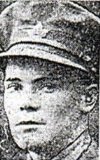
William Henry Price, MBE, Civilian, Royal Ordnance Factory, Pembrey. (Llanelli). William was awarded the Member of the British Empire for his bravery during an explosion at Pembrey Munitions Works. The award was published in the London Gazette of 4 January 1918, and read: ‘For courage in attempting to stop a fire in an explosives factory under exceptionally dangerous circumstances. He lost four fingers and practically the use of both hands, while his face was permanently disfigured.’
Gwynedd William Llewellyn Pritchard, MC, Captain, 20th Battalion, Manchester Regiment. (Carmarthen). Gwynedd’s award of the MC was published in the London Gazette of 7 March 1919, and read: ‘On 8th October, 1918, during the advance on Sonia Farm, he displayed great gallantry and initiative in handling his company. Troops on the right having lost direction and a gap resulting, he made good first Bronx Farm and later .Foal Copse, the latter being strongly held by machine-guns, which would undoubtedly have held up the main advance on the left when it came to be proceeded with. He personally led his company in the attack on Foal Copse.’ Gwynedd was sadly killed in action soon after arriving back in France, during the Battle of the Selle on 23 October, 1918. He is buried at Pommereuil British Cemetery, France.
William George Probert, DCM, Company Sergeant Major, 19994, 15th Battalion, Welsh Regiment. (Llangennech). William’s award of the Distinguished Conduct Medal was published in the London Gazette of 21 October 1918, and read: ‘For conspicuous gallantry and devotion to duty. For eighteen months this warrant officer has carried out his duties as company Sergeant-major in a most able and conscientious manner, and frequently shown himself cool and courageous.’ He died at Llanelli in 1939.
James Prout, MM, Private, 16341, 6th Battalion, South Wales Borderers. (Ammanford). James was from Saundersfoot, but had moved to Ammanford several years prior to the war. His award of the Military Medal was published in the London Gazette of 10 November 1916, and was for gallantry on the Somme.
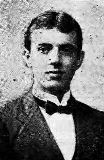
Dame Margaret Ker Pryse-Rice, OBE. (Llandovery). Margaret was the wife of Sir John Carbury Pugh Vaughan Pryse-Rice, of Llwynybrain, Llandovery, She was President of the Carmarthenshire Branch of the British Red Cross Society throughout the war, and put a huge amount of effort into fund raising and organising the various branches of military hospitals throughout the county. She was made Dame Commander of the Order of the British Empire, the award of which was published in the London Gazette of 4 January 1918. Her two eldest daughters died in 1921 after having worked as nurses throughout the war.
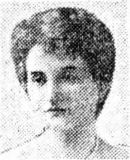
Herbert Owain Pugh, DSO, Major, Welsh Horse Yeomanry. (Llangunnor). Herbert was born at Llanafan, Cardiganshire on 9 July 1874, the son of Lewis Pugh Pugh, MP and of Veronica Harriet Pugh (nee Hills), the daughter of Sir James Hills-Johnes, VC). He lived at Mount Hill, Llangunnor prior to the war. He had been awarded the Distinguished Service Order while serving as a Lieutenant with Lumsden’s Horse during the Boer War of 1899-1902, and in WW1 was commissioned into the Welsh Horse Yeomanry, becoming instrumental in raising the regiment. He served in Gallipoli, Egypt and Palestine, and was appointed Second-in-Command of the Berkshire Yeomanry in March 1917. He was severely wounded at Gaza 19 April 1917, and invalided on account of wounds 7 May 1918.
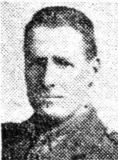
Ivor Pugh, MBE, Civilian, Royal Ordnance Factory, Pembrey. (Llanelli). Ivor was awarded the Member of the British Empire for his bravery during an explosion at Pembrey Munitions Works. The award was published in the London Gazette of 4 January 1918, and read: ‘For presence of mind and courage in carrying into the open at an explosives factory a bucket containing an explosive mixture, which had taken fire and threatened loss of life and damage to property. When it exploded he suffered from personal injuries.’
George Edward Radford, MM, Sergeant, 117038, 331 Siege Battery, Royal Garrison Artillery. (Llanelli). George’s award of the Military Medal was published in the London Gazette of 21 January 1919. He had sadly been killed during the advance on the Hindenburg Line on 22 September 1918, and is buried at La Chapelette British and Indian Cemetery, Peronne.
Thomas Rainford, DCM, Corporal, 85913, Royal Field Artillery. (Ammanford). Thomas’s award of the Distinguished Conduct Medal was published in the London Gazette of 29 December 1916, and read: ‘For conspicuous gallantry and devotion to duty. He has performed consistent work throughout, and has at all times set a splendid example.’ He was also mentioned in despatches in the London Gazette of 31 December 1915.
Reverend David Randell, CdeG, Chaplain, Royal Army Chaplain’s Department. (Llanelli). David’s award of the Belgian Chevalier of the Order of Leopold was published in the London Gazette of 21 September 1917. He was also awarded the Belgian Croix-de-Guerre in the London Gazette of 8 March 1918.
Frederick Charles Rea, MM, Corporal, 2233 (265804), 1/6th Battalion, Welsh Regiment. (Gorslas). Frederick was from Worcester, but worked as a miner at Gorslas for many years. His award of the Military Medal was published in the London Gazette of 8 December 1916. He died in Swansea in 1980, just after his 100th birthday.
Walter N. Reed, MM, DCM, Company Sergeant Major, G/1147, 7th Battalion, East Kent Regiment. (Carmarthen). Walter was already the holder of the Military Medal when he gained the award of the Distinguished Conduct Medal. The award of his Military Medal has not yet been traced, but the citation for his Distinguished Conduct Medal was published in the London Gazette of 2 December 1919, and read: ‘For conspicuously gallant conduct and devotion to duty during operations, 18th-25th September, 1918, near Ronssoy. He was buried by shell fire, and though badly shaken continued to carry on. On the 19th September he greatly assisted his company commander in reorganising the company, and later in the day voluntarily led forward a patrol towards the enemy positions, and was successful in finding out much valuable information, which he reported. His unfailing cheerfulness and courage throughout was of the highest value.’
Evan Rees, DCM, Sergeant, 12859, Royal Welsh Fusiliers. (Llanelli). Evan’s award of the Distinguished Conduct Medal was published in the London Gazette of 3 October 1918, and read: ‘For conspicuous gallantry and devotion to duty during an enemy attack. When the enemy had broken through on both flanks, this NCO advanced his Lewis gun and carried on firing with great effect. He checked the enemy’s advance on both sides and enabled his company to withdraw intact to the next line of defence. He did very fine work.’
Evan Henry Rees, MM, Corporal, 448085, 436th Welsh Field Company, Royal Engineers. (Kidwelly). Evan was the second son of Mr. and Mrs John Rees, of Castle Stores, Kidwelly. His award of the Military Medal was published in the London Gazette of 15 March 1918, and was for gallantry and devotion to duty in Palestine.
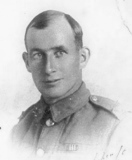
Horace V. Rees, MM, Private, 34473, 9th Battalion, Welsh Regiment. (Carmarthen). Horace’s award of the Military Medal was published in the London Gazette of 3 June 1916, and was for Loos, when he was one of three men who bravely went out into No Man’s Land following the disastrous attack of 25 September 1915 to rescue almost 150 wounded comrades. He was later posted to the 12th Welsh, due to wounds.
Idwal Rees, MM, Private, 72067, Cheshire Regiment (Llansteffan). Idwal was born at Wattstown, the son of Lewis and Mary Rees. By 1911 his father had retired, and the family moved to Bryn House, Llansteffan. Idwal enlisted into the army, and was posted to the Cheshire Regiment, with the service number 72067. He became a stretcher bearer with his battalion, and was captured by the Germans in the summer of 1917 whilst attending to wounded men on the battlefield. Idwal was interred at Merseberg Camp, and was awarded the Military Medal for Bravery in the Field for his efforts. The award was published in the London Gazette of 8 October 1918.
James Rees, MM, Private, R/33710, King’s Royal Rifle Corps. (Llanelli). James’ award of the Military Medal was published in the London Gazette of 11 January 1918.
Joseph Rees, CdeG. Petty Officer, Royal Navy. (Pontardulais). Joseph was reported in a local newspaper to have been awarded the French Croix-de-Guerre. Nothing more is presently known of him or the award.
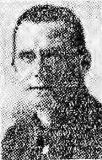
Philip I. Rees, MM, Private, 368097, Royal Army Medical Corps. (Garnant). Philip’s award of the Military Medal was published in the London Gazette of 11 January 1918.
Stephen Rees, MM, Private, 201034, 4th Battalion, Welsh Regiment. (Llanelli). Stephen was reported to have been awarded the Military Medal during the war, but I have so far been unable to trace the Gazette date.
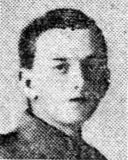
Sydney Rees, DCM, Sergeant, 320408, 24th Battalion, Welsh Regiment, attended 231st Light Trench Mortar Battery. (Kidwelly). Sydney’s award of the Distinguished Conduct Medal was published in the London Gazette of 11 March 1920, and read: ‘On 19th September 1918, near Ronssoy, he collected all available men, and, by repeated journeys, kept up the supply of ammunition, thereby enabling the guns to put out of action an enemy machine gun which was holding up the advance. Two days later, in charge of a section, he got his guns into position under heavy shell fire.
Thomas J. Rees, MM, Private, 20182, 15th Battalion, Welsh Regiment. (Llandebie). Thomas’ award of the Military Medal was published in the London Gazette of 28 September, 1917 and was probably for the Pilckem Ridge. He was discharged on 17 January 1919.
William Every Rees, MM, Private, 6636, 10th Field Ambulance, Royal Army Medical Corps. (Llanelli). William’s award of the Military Medal was published in the London Gazette of 11 February 1919. He served throughout the war attached to the 4th Division.
Frederick Reynolds, MM, Private, S/9313, Seaforth Highlanders. (Carmarthen). Frederick’s award of the Military Medal was published in the London Gazette of 25 June 1918.
Frederick A. Richards, MM, Private, 15th Battalion, Welsh Regiment. (Laugharne). A note in an edition of the Carmarthen Journal stated that Frederick, the son of Mr and Mrs G. Richards of Laugharne, had been awarded the Military Medal. He was later wounded by gas in April 1918 and taken POW. Neither Frederick or the award have yet been identified.
John Hywel Richards, MC, Lieutenant, 6th Battalion, South Wales Borderers. (Carmarthen). John’s award of the MC was published in the London Gazette of 8 January 1918, and read: ‘For conspicuous gallantry and devotion to duty when in charge of a convoy. He went forward during a hostile counter-attack and reconnoitred the ground to find the best route for the animals through both the barrage and shell-holes, under heavy shell fire, through which he then led them without hesitation, sustaining only a few casualties. He successfully delivered the stores and ammunition which were urgently required. He has on several occasions shown remarkable initiative and great gallantry during similar journeys.’ John was mortally wounded during the German Spring Offensive on the Lys, and died of wounds on 19 April 1918. He is buried at Aire Communal Cemetery, France.

William Richards, Stoker, Royal Navy. (Laugharne). A note in an edition of the Carmarthen Journal stated that William, the son of Mr and Mrs T. Richards of Laugharne, had been awarded the Military Medal. Neither William or the award have yet been identified.
John H. Richardson, MM, C de G, Sergeant, 20419, 15th Battalion, Welsh Regiment. (Llanelli). John’s award of the Military Medal was published in the London Gazette of 11 February 1919. He was also awarded the Croix-de-Guerre.
Morris Ernald Richardson, DSO, Major, 26th Battalion, Northumberland Fusiliers. (Llandeilo). Morris was the son of Colonel John Crow Richardson, of Glanbrydan Park, Llandeilo. He was gazetted Lieutenant into the Carmarthen Royal Garrison Artillery on 24 February 1900, and was later former Commander of the 3rd Glamorgan Volunteer Rifles. He took command of the 26th Northumberland Fusiliers during the Great War. His award of the Distinguished Service Order was gazetted in August 1916, and read: ‘For conspicuous gallantry and determination near Hooge. When he had received three wounds in the attack he refused to go back till he had given orders to his successor. He remained two hours in a dangerous spot, and then walked back to Brigade Hd. Qrs. and personally reported the situation.’ Morris was also awarded the French Legion d’Honneur.
David J. Roberts, MID, Sergeant, 355064, 25th Battalion, Royal Welsh Fusiliers. (Llanelli). David was mentioned in despatches in the London Gazette of 13 May 1919.
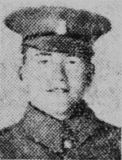
Ernest Hiram Roberts, MM, Private, 3725, Duke of Lancasters Own Yeomanry. (Ammanford). Ernest’s award of the Military Medal was published in the London Gazette of 8 December 1916. He was later commissioned into the Lancashire Fusiliers.

Frank Roberts, MC, Lieutenant, 15th Battalion, Welsh Regiment (Llanelli). Frank was the son of John and Caroline Roberts. He was educated at the University of Wales, Aberystwyth, and was commissioned Second Lieutenant into the 15th Welsh on 1 April 1915. He served throughout the rest of the war with the battalion, after recovering from severe wounds suffered at Mametz Wood in July 1916, gaining the Military Cross for gallantry during the final battles of the war. His Citation, Gazetted on 11 January 1919 read; ‘For conspicuous gallantry and fine leadership in an attack. With only sixteen men and no officer left he consolidated the position gained, and by judicious use of his Lewis guns he deceived the enemy as to his numbers and held on to his position for 24 hours without support on his flank, under heavy shell fire, inflicting considerable casualties on the enemy both with his own guns and with machine guns captured the day before. He did splendid work.’
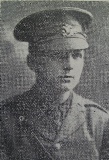
James Jeremy Roberts, MID, Lance Corporal, 22750, 15th Battalion, Welsh Regiment. (Laugharne). James was the son of George Roberts, of Fern Hill Cottage, Laugharne. He was mentioned in despatches during the war, but the Gazette date cannot presently be traced.
Owen Roberts, DCM, MM, Sergeant, 14146, 11th Battalion, Royal Welsh Fusiliers. (Saron). Owen gained three gallantry awards during the war. His award of the Distinguished Conduct Medal was published in the London Gazette of 10 January 1920, which read: ‘During an attack on 06.00 on the morning of September 18, 1918. After reaching their objective he collected about 30 men and led them against an enemy counterattack. By his prompt action the counter-attack was dispersed with severe loss to the enemy and 20 prisoners captured, thus enabling the captured trenches to be held. Throughout the following day he showed the utmost gallantry and disregard for danger. Owen’s award of the Military Medal was published in the London Gazette of 18 July 1919. He was also awarded the French Croix-de-Guerre, which was published in the London Gazette of 18 July 1919.
Percy E. Roberts, DCM, Private, 14226, 11th Battalion, Royal Welsh Fusiliers. (Llanelli). Percy’s award of the Distinguished Conduct Medal was published in the London Gazette of 24 November 1916, and read: ‘For conspicuous gallantry and devotion to duty. He carried a wounded man over a very exposed and rocky spur for a distance of 300 yards under a very heavy shell and rifle fire.’ The Llanelli Guardian published a story of Percy’s award.
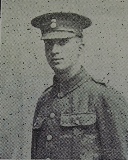
Robert Roberts, MBE, Civilian, Royal Ordnance Factory, Pembrey. (Burry Port). Robert was awarded the Member of the British Empire for his bravery during an explosion at Pembrey Munitions Works. The award was published in the London Gazette of 4 January 1918, and read: ‘For courage in saving the life of a fellow-worker at a. fire in an explosives factory under exceptionally dangerous circumstances. On behalf of his co-workers Mr. Roberts was also presented by the Lord Lieutenant with a gold watch.’
David Roberts-Morgan, DCM, MM, MID, Sergeant, 9358, 2nd Battalion, Royal Welsh Fusiliers. (Llanelli). David was another of the county’s most gallant soldiers. His award of the Distinguished Conduct Medal was published in the London Gazette of 19 August 1916, and read: ‘For conspicuous courage and ability when, as platoon Sergeant, he organised bombing parties against the enemy in dug-outs who would not surrender.’ David was awarded the Military Medal in the London Gazette of 1 September 1916, and was also mentioned in despatches during the war.
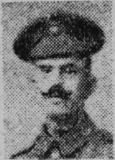
William Thomas Rogers, MM, Gunner, W/404, Royal Field Artillery. (Llanelli). William was the son of Tom Rogers, of 107, Old Castle Road, Llanelli. He had worked as a behinder at the Old Castle Works prior to the war. His award of the Military Medal was published in the London Gazette of 30 October 1917. An article in a local newspaper reported on the award: “He received this Medal for gallantry and devotion to duty in arresting the spreading of a fire to adjacent dumps when enemy shell fire caused the loss of about 26,000 rounds of ammunition in the forward area on July 28th last.”
Joseph Rose, MM, Sergeant, 80455, ‘D’ Battery, 63rd Brigade, Royal Field Artillery. (Llanelli). Joseph’s award of the Military Medal was published in the London Gazette of 16 October 1917. He was later killed during the Battle of Cambrai on 1 December 1917 and is buried at Peronne Communal Cemetery Extension.
Allen Maxwell Ruston, MM, Sergeant, 15585, 7th Battalion, Northumberland Regiment. (Carmarthen). Allen’s award of the Military Medal was published in the London Gazette of 2 June 1916. He was later commissioned into the 2nd Battalion, Lancashire Fusiliers, and was killed with them at the First Battle of Kemmel, on 23 April 1918. He is buried at Mont-Bernanchon British Cemetery, Gonnehem.
Robert George Salter, Colour Sergeant, 8895, Royal Marine Light Infantry. (Carmarthen). Robert was born on 9 April 1880, and had been recruiting officer for the Royal Navy and Royal Marines at Carmarthen for several years prior to the war. He was awarded the French Medaille Militaire on 8 April 1917, but nothing more can presently be traced of him.
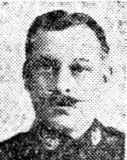
John Delahaye Sampson, MC, Captain, Welsh Regiment. (Llanedy). John was the son of Richard and Eliza Sampson, of Bryngwili, Pontardulais. He was commissioned into the 15th Battalion, Welsh Regiment (Carmarthen Pals). He was Mentioned in Despatches for his gallantry during the debacle at Aveluy Wood on 10 May 1918 (see Carmarthen Pals), and was awarded the Military Cross in the King’s Birthday Honours List of 31 May 1918. His brother Richard Harry Sampson died in 1918. John died in 1958 after losing his commission in the 4th Welsh after the collapse of his business in 1924.
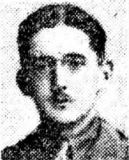
George Samuel, MM, Bombardier, Royal Artillery. (Llanelli). George was mentioned in the Llanelly Star as being the recipient of the Military Medal, and also having a warm homecoming at New Dock. He cannot presently be identified.
Harold St George Schomberg, DSO, Lieutenant-Colonel, 1/6th Battalion, Gloucestershire Regiment. (Carmarthen). Harold was born on 24 August 1886. He was commissioned in The East Surrey Regiment from Militia on 8 July 1908 and joined the 1st Battalion. He served with the 1st Battalion in France and was wounded in September 1914 and on 30 October 1914. He served with the 1/6th Gloucestershire Regiment in Italy from 1917 to 1919, and was awarded the Distinguished Service Order while in command of 1/6th Gloucester’s. He was mentioned in despatches four times and awarded the Italian Al Valore Militare. He retired as a Brigadier-General in 1939.
Arthur Scott, MM, C de G, Sergeant, 3866, Royal West Kent Regiment. (Llanelli). Arthur’s award of the Military Medal was published in the London Gazette of 10 September 1918. He was also awarded the Belgian Croix-de-Guerre in the London Gazette of 9 July 1918.
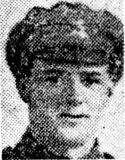
John Lionel Maurice Sinnett, MC, Second Lieutenant, Royal Field Artillery. (Llansadwrn). John’s award of the Military Cross was published in the London Gazette of 13 September 1918, and read: ‘For conspicuous gallantry and devotion to duty. Throughout a heavy day’s fighting as brigade liaison officer and forward observing officer under very heavy shell fire he kept up telephonic communication and sent back valuable information, and directed the artillery fire with great skill. He constantly went up to the infantry position throughout the heavy enemy barrage to ascertain personally the state of affairs, and took an important part in helping to repel the heavy enemy attacks which were being constantly renewed. His fine courage and disregard of danger were conspicuous.’
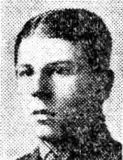
Lawrence Skinner, MBE, Civilian, Royal Ordnance Factory, Pembrey. (Llanelli). Lawrence was awarded the Member of the British Empire for his bravery during an explosion at Pembrey Munitions Works. The award was published in the London Gazette of 4 January 1918, and read: ‘For courage in attempting to stop a fire in an explosives factory under exceptionally dangerous circumstances.’
Alexander Hugh Dickson Smith, MC, Captain, Royal Army Medical Corps. (Llanelli). Alexander was awarded his Military Cross in the London Gazette of 25 September 1917. The citation was published on 8 January 1918, and read: ‘For conspicuous gallantry and devotion to duty. During a heavy hostile bombardment of a battery position a gunner was severely wounded and buried by a shell. Captain Smith came over from the next battery position, and with the assistance of a gunner helped to extricate the wounded man and dress him where he lay. The enemy’s fire continued throughout, one shell falling a few yards away and wounding the gunner. In spite of this, however, the dressing was completed and the wounded man safely removed.’
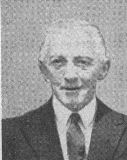
William Oliver Stephens, DCM, Sergeant, 1690, 18th Battalion, London Regiment. (Llandeilo). William was the son of William Smith, Headmaster of Heolfawr School, Llanelli. His award of the Military Medal was published in the London Gazette of 11 January 1916, and the citation, published on 11 March 1916, read: ‘For conspicuous gallantry. Although wounded during the attack, he continued to lead his men until he was obliged to give in from exhaustion, having been again wounded in the enemy’s second line trench.’
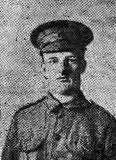
John William Stephenson, CdeG, Private, 3535, Royal Army Medical Corps. (Porthyrhyd). John was awarded the French Croix-de-Guerre during the war, for rescuing a wounded airman under heavy fire while attached to the 56th Howitzer Battery, RFA. He was killed on 10 August 1917, and is buried at La Gorgue Military Cemetery.

John Stewart, MBE, Civilian, Royal Ordnance Factory, Pembrey. (Llanelli). John was awarded the Member of the British Empire for his bravery during an explosion at Pembrey Munitions Works. The award was published in the London Gazette of 4 January 1918, and read: ‘For courage in remaining at work and seeing his job through after being severely shaken by an explosion at an explosives factory.’
Dudley Ellison Taylor, MSM, Corporal, 12222, 2nd Dragoon Guards. (Carmarthen). Dudley was awarded the Meritorious Service Medal in the Gazette of 14 June 1918 for valuable services in France. He died of sickness on 10 November 1918 and is buried at Carmarthen Cemetery.
Frederick James Taylor, DCM, Corporal, 108267, Royal Engineers. (Llandebie). Fred’s award of the Distinguished Conduct Medal was mentioned in an edition of the Carmarthen Journal. Neither the date of Gazette, nor the citation, have yet been identified.
Frederick Terrington, DCM, Corporal, 13695, 1st Battalion, Royal Welsh Fusiliers. (Tycroes). Frederick’s award of the Distinguished Conduct Medal was published in the London Gazette of 26 March 1918, and read: ‘For conspicuous gallantry and devotion to duty in volunteering three times to go on patrol. He drove in a small enemy covering party and accurately located two machineguns, though under heavy fire, in daylight. Later, he brought in many wounded, and though himself wounded, refused to withdraw until ordered to do so.’ He was accidentally killed while stationed on the Italian Front on 30 March 1918 and is buried at Padua Main Cemetery, Italy.
Aneurin Thomas, MM, Sergeant, 9000, 2nd Battalion, Welsh Regiment. (Llanelli). Aneurin’s award of the Military Medal was published in the London Gazette of 1 September 1916.
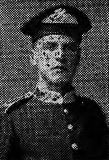
David Alcwyn Thomas, MM, Private, 48197, 130th Field Ambulance, Royal Army Medical Corps. (Penygroes). David’s award of the Military Medal was published in the London Gazette of 7 February 1919.
David John Thomas, Corporal, Deal/3461(S), Royal Naval Division. (Ponthenry). David was born on 2 June 1894, and had worked in the colliery at Ponthenry prior to the war, and enlisted with nine friends into the Medical Unit of the Royal Naval Division. His award of the Military Medal was published in the London Gazette of 23 February 1918, and was for carrying wounded men to cover under shell fire, during Third Ypres.

David J. Thomas, MM, Airman 2nd Class, 50104, Royal Flying Corps. (Pontyates). David’s award of the Military Medal was published in the London Gazette of 16 October 1917.
David Lewis Thomas, MM, Private, 46143, 1st Battalion, South Wales Borderers. (Llandebie). David’s award of the Military Medal was published in the London Gazette of 13 June 1919.
Elvet Tudor Thomas, MM, Private, 200268, 4th Battalion, Welsh Regiment. (Pontyberem). Elvet’s award of the Military Medal was published in the London Gazette of 17 July 1917, and was probably for the First Battle of Gaza.
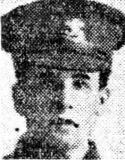
Fred Thomas, MM, Sergeant, 20974, 14th Battalion, Royal Welsh Fusiliers. (Johnstown). Fred’s award of the Military Medal was published in the London Gazette of 22 July 1919.
Geoffrey Lynn Thomas, MC, Captain, 95th Brigade, Royal Field Artillery. (Newcastle Emlyn). Geoffrey’s award of the Military Cross was published in the London Gazette of 14 November 1916, and read; ‘For conspicuous gallantry in action. An ammunition dump being set on fire, he led a party and extinguished the flames, displaying great courage and coolness. He set a fine example to his men.’ Geoffrey was later killed on 6 June 1918.
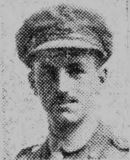
Gomer Benjamin Thomas, MM, Corporal, B/19571, 26th Battalion, Royal Fusiliers. (Gwaun-cae-Gurwen). Gomer was the son of Benjamin and Catherine Thomas, of Gwaun-cae-Gurwen. His award of the Military Medal was published in the London Gazette of 22 July 1919.
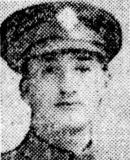
Gwilym Thomas, MM, Guardsman, 1276, Welsh Guards. (Llanelli). Gwilym’s award of the Military Medal was published in the London Gazette of 11 February 1919.
Gwynne Cecil Thomas, MBE, DSO, Major, South Wales Borderers. (Llanelli). Gwynne was the son of William and of Plasycoed Cottage, Llanedy. He had served in South Africa with the West African Frontier Force, before being gazetted as Quartermaster with the South Wales Borderers on 23 February 1901. By WW1 he was serving with the 1st Battalion, South Wales Borderers, and it was with the battalion that Gwynne earned several awards, being created M.B.E. and Mentioned in Despatches. He was also awarded the Military Cross in the King’s Birthday Honours List of 1 June 1917. He died in 1959 aged 85.
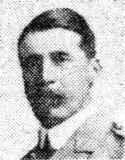
John Thomas, MM, Driver, W/2943, 38th Trench Mortar Battery, Royal Field Artillery. (Llannon). John’s award of the Military Medal was published in the London Gazette of 25 May 1917. He was later wounded at Armentières and died on 30 March 1918. John is buried at Merville Communal Cemetery Extension, France.
John Lynn Thomas, CB, CMG, F.R.C.S., Lieutenant-Colonel, Royal Army Medical Corps. (Llandyssul). John was made a Companion of the Order of St Michael and St George for his wartime service, the award of which was published in the London Gazette of 23 January 1917. John was made a Knight Commander of the Bath for his wartime service, the award of which was published in the London Gazette of 31 December 1918.
Moses Thomas, DCM, Lance Corporal, 20485, 15th Battalion, Welsh Regiment. (Llanelli). Moses’ award of the Distinguished Conduct Medal was published in the London Gazette of 5 December 1918, and read: ‘For conspicuous gallantry in action. When his entire section was wiped out by concentrated shrapnel and machine-gun fire he continued alone to fire his Lewis gun and covered the withdrawal of his company. Later, during an attack, he killed sixteen of the enemy, firing his Lewis gun from the hip, thereby capturing two machine guns. He showed splendid courage and determination.’
Niah Thomas, Private, 320489, Welsh Regiment. (Carmarthen). Niah was the son of Mrs. Phillips, of Culford Road, Loughor. He had worked as a farm servant at Penlan Voss Farm, Carmarthen prior to enlisting into the Pembroke Yeomanry, and was in Egypt when the Pembroke and Glamorgan Yeomanry merged to form the 24th Battalion, Welsh Regiment. Niah was awarded the Military Medal for bravery during the capture of Jerusalem in December 1917. The award was gazetted on 19 March 1918. He died in Carmarthen in 1975, aged 81.
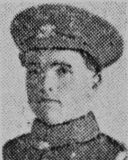
Norman Thomas, MM, Sergeant, R/3758, 11th Battalion, Kings Royal Rifle Corps. (Llandeilo). Norman’s award of the Military Medal was published in the London Gazette of 16 October 1917. He was killed in action at Cambrai on 30 November, 1917 and is remembered on the Cambrai Memorial, Louverval.
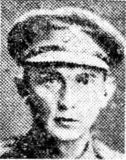
Rhys Ivor Thomas, MC, Lieutenant, 1st Battalion, Connaught Rangers. (Carmarthen). Rhys was awarded the Military Cross in the London Gazette of 29 September 1914. He was one of the first men to have ever gained this new award. Sadly he was killed during the Battle of the Aisne on 14 September 1914, and is buried at Vailly British Cemetery.
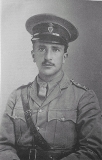
Robert Bell Thomas, MM, Gunner, 168189, Royal Field Artillery. (Llandeilo). Robert was the son of Lewis Thomas, of the White Lion Hotel, Llandeilo. His award of the Military Medal was published in the London Gazette of 9 April 1918. His brother, Adolphus Thomas, was killed with the Welsh Guards.
Samuel Thomas, CdeG, Private, 6563, Australian Army Service Corps. Samuel was born at Newchurch in 1882, the son of James Thomas and Margaret Thomas (nee Bowen). He emigrated to Australia together with his younger brother Owen some years prior to the war. Both men enlisted into the Australian Imperial Force soon after the outbreak of war; Owen joining the 9th Battalion, Australian Infantry, and Samuel joining the Australian Light Horse. Samuel was then posted to the 17th Company, Australian Army Service Corps, which was attached to the 2nd Australian Division. He was awarded the Belgian Croix-de-Guerre for his bravery whilst serving with the unit during the Passchendaele offensive. The recommendation for the award stated: ‘For gallant conduct and devotion to duty in the field whilst in the Ypres sector during the months of October and November 1917. On the 28th.October this N.C.O. was in charge of a convoy of wagons conveying R.E. material from the Menin Road to Wattle Dump via Westhoek Ridge, when it came under heavy shell fire from the enemy. Though in the confusion that ensued several wagons were precipitated into shell holes off the road, the initiative and coolness of this N.C.O. enabled every vehicle to be save. He remained on duty until every wagon had been drawn out of the mud and sent into safety, his courage and coolness supplying a most inspiring example to all concerned. His conduct has always been of a most exemplary character.’ Both Samuel and his brother Owen survived the war.
William John Thomas, MM, CdeG, Private, 48201, 131st Field Ambulance, Royal Army Medical Corps. (Llandebie). William was awarded the French Croix-de-Guerre in the London Gazette of 18 July 1919, in the same issue as his award of the Military Medal.
William John Thomas, MM, Guardsman, 3208, Welsh Guards (Kidwelly). William’s award of the Military Medal was published in the London Gazette of 14 May 1919.
Sigebert Frederick John Thompson, MSM, Staff Sergeant, S4/109581, Special Purchase Department, Royal Army Service Corps. (Carmarthen). Sigebert was the son of Robert and Edith Thompson, of 43, Parcmain Street, Carmarthen. He landed in France on 2 December 1915 with the 38th (Welsh) Division. His award of the Meritorious Service Medal was published in the London Gazette of 17 January 1919. He died at Carmarthen in 1957.
Maud Jane Todman, RRC, Sister, Queen Alexandrias Imperial Military Nursing Service. (Laugharne). Maud was awarded the Royal Red Cross 2nd Class in the London Gazette of 3 June 1918 for valuable services in Salonika. Her brother, Charles Vincent Todman, was killed in France in 1917.
Thomas John Tomkins, MM and Bar, Lance Sergeant, 25326, 17th Battalion, Welsh Regiment. (Llanelli). Thomas was a miner from Ynishir, who was living at Llanelli when war broke out. His award of the Military Medal was published in the London Gazette of 17 July 1917, and was for La Vacquerie. He was reported to have later been awarded a Bar to his Military Medal, but this has not presently been verified.
David John Treharne, MM, Private, 54557, 14th Battalion, Welsh Regiment. (Llansteffan). David was the son of Daniel and Anne Treharne, of Llanstephan. His award of the Military Medal was published in the London Gazette of 17 June 1919. A newspaper report stated that it was for: ‘Conspicuous gallantry and devotion to duty during the attack across the River Selle on Oct. 20th, 1918. During the advance he got in touch with the rest of the battalion and suddenly came across a party of 30 of the enemy. He at once collected his section and charged the enemy, killing 10 and taking the remainder prisoners.’
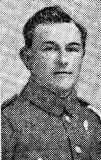
Harold Ernest Trubshaw, MID, Captain, 439th Field Company, Royal Engineers. (Llanelli). Harold was the son of Ernest and Lucy Trubshaw, of Llanelli. He was mentioned in despatches in the London Gazette of 6 July 1917. Harold died at Llanelli on 25 October 1951.
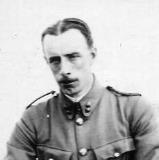
John Henry Varley, MM, Sergeant, 355587, Royal Welsh Fusiliers. John was born in Surbiton on 18 May 1873, the son of William and Eliza Varley. He was a professional soldier, having served in India, taking part of the charge of the 16th Lancers at Omdurman, and then served during the Boer War. He came to Wales after leaving the army and began work for Nevill’s at Llanelli. On 7 June 1914 he married Catherine Williams, at St. Peter’s Church, Llanelli, and the couple lived at 4, Nevill Road. At the outbreak of war John re-enlisted into the newly formed Welsh Horse Yeomanry and served with the regiment at Gallipoli. The Welsh Horse was evacuated from Gallipoli in January 1915 and moved to Egypt, where in March 1917 it merged with the Montgomeryshire Yeomanry to form the 25th Battalion, Royal Welsh Fusiliers, attached to 231 Brigade, 74th (Yeomanry) Division. John served in Palestine with the Division, then in May 1918 moved to the Western Front, where the Division initially took over the St. Floris sector. John won the award of the Military Medal here on 17 July 1918: ‘Sjt Varley and 2 other Bn scouts went into no man’s land to investigate a German MG that had been annoying us. Sjt Varley entered the German trench and whilst the sentry’s back was turned, took his machine gun and returned with it to our lines.’ Sadly, Catherine had died suddenly in 1916. Following the Armistice, John married Florence Emily Aldworth, and he lived until 1970.
Albert Ernest, Vass, MBE, Civilian, Royal Ordnance Factory, Pembrey. (Burry Port). Albert was awarded the Member of the British Empire for his bravery during an explosion at Pembrey Munitions Works. The award was published in the London Gazette of 4 January 1918, and read: ‘For courage in stopping a fire in an explosives factory at grave risk of his life.’
John David Vaughan, MC, Second Lieutenant, 14th Battalion, Welsh Regiment. (Burry Port). John’s award of the MC was published in the London Gazette of 9 January 1917: ‘For conspicuous gallantry in action. He carried out a daring reconnaissance with great courage and determination, obtaining most valuable information.’ He was later wounded at Ypres, and died of wounds on 18 March 1917. He is buried at Ferme-Olivier Cemetery, Belgium.
John Willis Walker, MC and Bar, Lieutenant (A/Captain), Tunnelling Company, Royal Engineers. (Llanelli). John was the son of Willis and Clara Walker, of Palace Avenue, Llanelli. His first award of the Military Cross was published in the London Gazette of 28 December 1917, without a citation. He was awarded a Bar to his Military Cross in the London Gazette of 13 September 1918, the citation reading: ‘For conspicuous gallantry and devotion to duty. When an infantry officer leading a counter-attack was killed, this officer at once took charge of it, leading it forward under point blank machine-gun fire, and whilst doing so was wounded. Though helpless he refused to surrender, and in the subsequent confusion escaped, assisted by two non-commissioned officers, who carried him past the enemy through heavy fire to our lines.’ John was brought back to England, where he had to have a leg amputated. He made a good recovery, and was invested with his decoration by the King at Buckingham Palace.
Ian Walters, MID, Lieutenant, 1/1st Welsh Field Company, Royal Engineers. (Carmarthen). Ian lived at Penllwyn Park, Carmarthen. He had served with the Welsh Field Company for most of the war, and was mentioned in despatches in the London Gazette of 22 January 1919.
Gilbert France Watson, DSO, Lieutenant, 1/1st Welsh Field Company, Royal Engineers. (Abergwili). Gilbert was transferred from the Welsh Royal Engineers to another unit in France, and gained his award of the DSO at Hooge. The citation in the London Gazette of 7 December 1915 read: ‘For conspicuous gallantry and determination near Hooge. On the night of 24th-25th September, 1915, he made an excellent reconnaissance of the enemy’s wire, and on the 25th crawled out with two men, and successfully cut it before the assault. During the assault, with a party of 12 sappers and 25 infantry, he dug 80 yards of a communication trench in two hours under very heavy fire, by which nearly threequarters of his men became casualties. He then reported for instructions, and took the remains of his party into the captured positions in order to consolidate them. When retirement was ordered he got back to our original trenches with one sergeant, who was killed almost at once, and three or four men, and, finding the trenches unoccupied, he collected about 25 men of the 4th Battalion Gordon Highlanders, and held on until relieved by another battalion after dark. Second Lieutenant Watson set a fine example of bravery and devotion to duty.’
Merlin Rees Watts, MM, Private, 260373, Gloucestershire Regiment. (Laugharne). Merlin was the son of George and Esther Watts, of Llansadwrnen. His award of the Military Medal was published in the London Gazette of 13 November 1918. He had previously served with the Monmouth Regiment. He died in 1979.
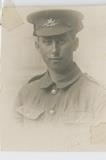
James Wightman, DSO, MC, Major, 8th Battalion, East Surrey Regiment. (Carmarthen). James’s award of the Military Cross was published in the London Gazette of 24 November 1916, and read: ‘For conspicuous gallantry in action. He led a bombing party with great courage and determination, and repulsed the enemy. He acted as leading thrower, and threw bombs continuously for two hours. He has previously done fine work.’ By the time of the German Spring Offensives of 1918, James was a Major, and he was killed during the Battle of St. Quentin on 9 April 1918, aged 25. James is buried at Picquigny British Cemetery, France. James was also awarded the Distinguished Service Order, which was announced in the London Gazette of 31 May 1918. By the time of the German Spring Offensives of 1918, James was a Major, and he was killed during the Battle of St. Quentin on 9 April 1918. He is buried at Picquigny British Cemetery, France.
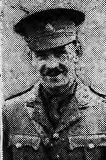
Thomas Rees Wild, DCM, Private, 56945, 13th Battalion, Welsh Regiment. (Kidwelly). Thomas was the son of Thomas and Sarah Wild, of Kidwelly. His award of the Distinguished Conduct Medal was published in the London Gazette of 5 December 1918, and read: ‘For conspicuous gallantry and initiative during an attack. Seeing an enemy machine gun causing heavy casualties, this man, who was a company runner, collected a few men and rushed the gun, capturing it and killing the team. Later he bayoneted two enemy snipers who were causing casualties to his company crossing a canal. He showed splendid courage and dash.’
Paul Burgmann Wilkins, OBE, MC, DFC, Lieutenant, 100 Squadron, Royal Air Force. (Burry Port). Paul was born at Burry Port on 11 August 1896. He had originally served with the 38th (Welsh) Divisional Engineers before being wounded at Mametz Wood, and was commissioned into the 2nd Field Company, Royal Engineers the following year. His first award was the Military Cross, which was published in the London Gazette of 18 October 1917, and read: ‘For conspicuous gallantry and devotion to duty. He himself laid out the assembly tapes for the first wave over a wide front, and was slightly wounded while doing so. In spite of this, when a whole section of tape was destroyed by shellfire, he returned, replaced it and afterwards directed the laying of the second and third waves. He had previously reconnoitred the whole ground under heavy shell fire.’ He then transferred to the Royal Flying Corps, and was posted to 100 Squadron. He was awarded his Distinguished Flying Cross in the London Gazette of 3 June 1919, which read: ‘This Observer has done excellent work, participated in 23 night bombing raids and has at all times shown a fine offensive spirit, devotion to duty, unfailing energy and great keenness. Full of pluck, on several occasions he has done two or three raids in a night. His skill as an Observer is remarkable.’ Paul then joined the Indian Police at Bombay in 1923, and in the London Gazette of 11 June 1942 was awarded the Order of the British Empire.
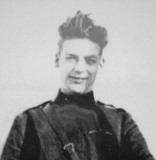
Vernon Lloyd Wilkins, MM, Private, 200329, 4th Battalion, Welsh Regiment. (Kidwelly). Vernon was born on 14 September 1894, the son of Johnny and Edna Wilkins, of Gwendraeth Town, Kidwelly. His award of the Military Medal was published in the London Gazette of 17 July 1917. A newspaper report stated: ‘Although wounded himself he carried a more badly wounded comrade into safety under heavy fire.’ He died in Northampton in 1971.
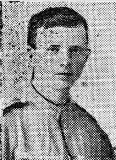
William Clifford Wilkins, MC, Lieutenant, Tank Corps. (Llanelli). William was the son of William Wilkins, of Llanelli. His award of the Military Cross was published in the London Gazette of 11 October 1918, and read: ‘This officer fought his tank during an action with the utmost gallantry. After it had been damaged by a direct hit, he nevertheless managed to manoeuvre it, fighting all the time, onto its final objective. While there it received a second direct hit, and it was only by the most determined efforts and fine fighting spirit that he was able to withdraw it and prevent it falling into the enemy’s hands. His example to his crew was admirable.’ He was also awarded the French Croix-de-Guerre.
Charles Edward Williams, OBE, Captain, Ministry of Munitions. (Carmarthen). Charles was the son of David Edward Williams, of the Ivy Bush Hotel, Carmarthen. He was reportedly awarded the Order of the British Empire for his work as the Director of the Ministry of Munitions. The award has not presently been traced.

David Daniel Williams, MM, Private, 12753, 2nd Battalion, Devonshire Regiment. (Pontardulais). David was one of several men from Pontardulais who served with the 2nd Battalion, Devonshire Regiment. His award of the Military Medal was published in the London Gazette of 23 February 1918, and was probably awarded for Third Ypres. Daniel was killed during the German Spring offensive on 25 March 1918, and is commemorated on the Pozieres Memorial, France.
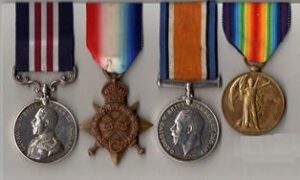
David William Williams, MM and Bar, Private, 18429, 13th Battalion, Welsh Regiment. (Kidwelly). David’s award of the Military Medal was published in the London Gazette of 18 October 1917, and was probably for the Pilckem Ridge. He also gained a Bar to his Military Medal, which was published in the London Gazette of 11 February 1919.
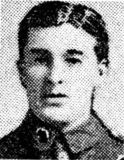
Doris Williams, RRC, Nurse, Auxiliary Hospital, Parc Howard. (Llanelli). Doris was a Surgical Ward Nurse at Parc Howard Auxiliary Hospital, and was awarded the Royal Red Cross 2nd Class in the London Gazette of 23 October 1917 for valuable services in connection with the war.
Edward Williams, MM, Private, 235821, 14th Battalion, Royal Welsh Fusiliers. (Manordilo). Edward’s award of the Military Medal was published in the London Gazette of 22 July 1919.
Edward John Williams, Corporal, 448162, Royal Engineers. (Carmarthen). Edward’s award of the Military Medal was published in the London Gazette of 15 March 1918. He was given the Freedom of the Borough of Carmarthen, in April 1919, and was awarded the Military Medal for: ‘On the 12th November, 1917, at Kawalfe, Beersheba, Palestine, for carrying in wounded under heavy fire.’ He was also reportedly awarded the Italian Al Valore Militaire for the same deed.

Evan Williams, Sergeant, 52996, 78th Company, Machine Gun Corps. (Llanwrda). Evan was the son of John and Margaret Evans, of Llwyngweno, Llansadwrn. He had served from the outbreak of war with the Pembroke Yeomanry, before transferring to the Machine Gun Corps. His award of the Military Medal was published in the London Gazette of 25 September 1917, and was for Salonika.
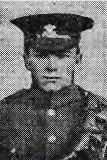
Evan Samuel Williams, MM, Pioneer, 195965, Royal Engineers. (Kidwelly). Evan was the son of Henry and Hannah Williams, of Kidwelly. His award of the Military Medal was published in the London Gazette of 10 September 1918.
Griffith Trevor Williams, MM, Lance Corporal, 794, Welsh Guards, (Carmarthen). His award of the Military Medal was published in the London Gazette of 24 January 1919.
Henry Williams, DCM, Company Sergeant Major, 200685, 1/4th Battalion, Welsh Regiment. (Llanelli). Henry’s award of the Distinguished Conduct Medal was published in the London Gazette of 18 February 1918, and read: ‘For conspicuous gallantry and devotion to duty in an advance. On reaching the enemy’s position he collected a party of men, consolidated the position with great ability. He set a fine example of courage and coolness on this and many other occasions.’ He was also mentioned in despatches.
John Williams, MM, Sergeant, 20663, 15th Battalion, Welsh Regiment. (Carmarthen). John’s award of the Military Medal was published in the London Gazette of 11 February 1919. A report in a local newspaper stated: ‘At Thiepval on August 23, 1918. He went out and captured a German machine-gun and team practically single-handed. Later on he was severely wounded near Delville Wood in volunteering to take rations and water to an isolated company, during which attempt he exposed himself to heavy machine-gun fire and sniping with reckless bravery.’ John was given the Freedom of the Borough of Carmarthen, on April 1919.

John R. Williams, MM, Sergeant, 12911, South Wales Borderers. (Pontyberem). John’s award of the Military Medal was published in the London Gazette of 9 April 1918.
Myrddin Williams, MM, Private, 13676, Welsh Regiment. (Ammanford). Myrddin’s award of the Military Medal was published in the London Gazette of 25 April 1918.
Richard Pritchard Williams, MC, Lieutenant, Welsh Regiment. (Llandeilo). Richard was the son of Griffith Williams, of Llandeilo. He was commissioned from the King’s Royal Rifle Corps into the Welsh Regiment, and was awarded his Military Cross while serving with the 14th Welsh. The award was gazetted on 29 November 1918 and read: ‘ Shortly after the attack had started all the other officers of his company were hit. He at once took command and reorganised the line under very heavy machine-gun fire. His initiative and complete disregard of danger were conspicuous, and he rendered particularly valuable service at a critical moment, and his example greatly inspired his men.’
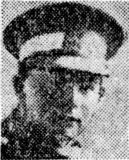
Robert E. Williams, MM, Private, 54311, Royal Army Medical Corps. (Penygroes). Robert’s award of the Military Medal was published in the London Gazette of 11 December 1917.
William Williams, DCM, Private, Welsh Regiment. (Pontardulais). William is noted in a newspaper report as having been awarded the Distinguished Conduct Medal. Neither the award nor William himself has presently been identified.

William Williams, DCM, Sergeant, 320121, 24th Battalion, Welsh Regiment. (Nantgaredig). William’s award of the Distinguished Conduct Medal was published in the London Gazette of 11 March 1920, and read: ‘For gallant and able leadership on 7th September 1918, during the advance from Templeux la Fosse. When his company suffered heavy casualties from enemy barrage he reorganised two platoons, pushed on and obtained his objective. But for his initiative the line would have been held up.’
William Henry Williams, DCM, Company Sergeant Major, 1055, 1/1st Welsh Field Company, Royal Engineers. (Carmarthen). William’s award of the Military Medal was published in the New Years Honours List of 31 December 1918, and the citation, published on 4 January 1919, read: ‘He has always consistently set a high example of devotion to duty, coolness under fire, and determination under difficult and adverse circumstances, and has on more than one occasion rendered valuable services by his capable leadership and authority.’ He was also awarded the French Medaille Militaire.
William Henry Williams, MM, Lance Corporal, 126930, 1/1st Welsh Field Company, Royal Engineers. (Llanelli). William’s award of the Military Medal was published in the London Gazette of 12 July 1918.
William Henry Williams, MM, Private, 14682, 5th Battalion, South Wales Borderers. (Llanelli). William’s award of the Military Medal was published in the London Gazette of 19 February 1917. He had sadly been earlier killed in action at the Battle of Pozieres on 30 July 1916, and is commemorated on the Thiepval Memorial, France.
William James Williams, MC, Second Lieutenant, 16th Battalion, Royal Welsh Fusiliers. (Llandovery College). William’s award of the Military Cross was published in the London Gazette of 8 January 1918, and read: ‘rallied his men and kept them well in hand under heavy fire, showing a splendid example of steadfastness to his men throughout.’ William was sadly killed in action at Armentières prior to the posting of the notice, on 19 September 1917, and is buried in Erquinghem Lys Churchyard Extension.
William John Williams, MC, Second Lieutenant, 12th Battalion, South Wales Borderers. (Bynea). William’s award of the Military Cross was for Cambrai. It was published in the London Gazette of 24 July 1917, and read: ‘For conspicuous gallantry and devotion to duty in a succession of patrol actions. He has continually shown great dash and courage in carrying out his patrol duties, attacking and dispersing superior forces of the enemy and taking many prisoners.
William John Williams, MC, Lieutenant, 1st Battalion, Welsh Regiment. (Llanelli). William was born on 12 June 1882. He enlisted in London on 18 Feb 1915 as a private, and on 22 August 1915 was discharged from the Queens Regiment on receiving his commission, joining the Welsh Regiment on 24 July 1916. William’s award of the Military Cross was published in the London Gazette of 1 January 1919. There was no citation, as it was in the New Years Honours List, but the award was for Salonika.
Sidney Harold Wilson, MM, Sapper, 448534, Welsh Field Company, Royal Engineers. (Llanelli). Sidney’s award of the Military Medal was published in the London Gazette of 28 March 1919.
David Thomas Woodcock, DCM, Sergeant, 725274, C/265th Brigade, Royal Field Artillery. (Llanelli). David had been a Policeman at Llanelli prior to the war. His award of the Distinguished Conduct Medal was published in the London Gazette of 9 March 1920, and read: ‘Throughout the war he has shown cool courage, ability and initiative. On 18th September, 1918, at Abu Felah, when the battalion Sergeant major was wounded, he took over his duties, and during the subsequent days it was largely through his untiring energy that the battery was able to answer every call made upon it by the infantry.’
David John Yeo, MM, Private, 63131, 14th Battalion, Welsh Regiment. (Carmarthen). David’s award of the Military Medal was published in the London Gazette of 14 May 1919. Sadly he was dead by then, having being killed at the Battle of the Sambre on 4 November 1918 while serving with the 9th Welsh. He is commemorated on the Vis-En-Artois Memorial, France.
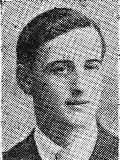
James Young, MM, Corporal, 40599, Royal Field Artillery. (Hendy). James’s award of the Military Medal was published in the London Gazette of 23 January 1918, so was probably for Third Ypres.